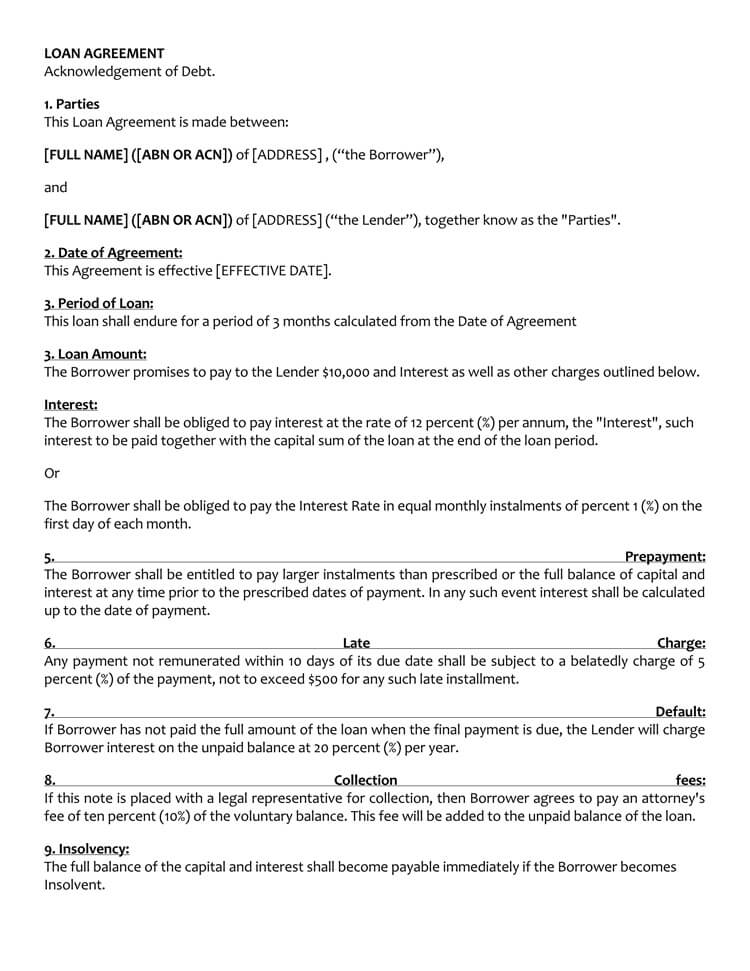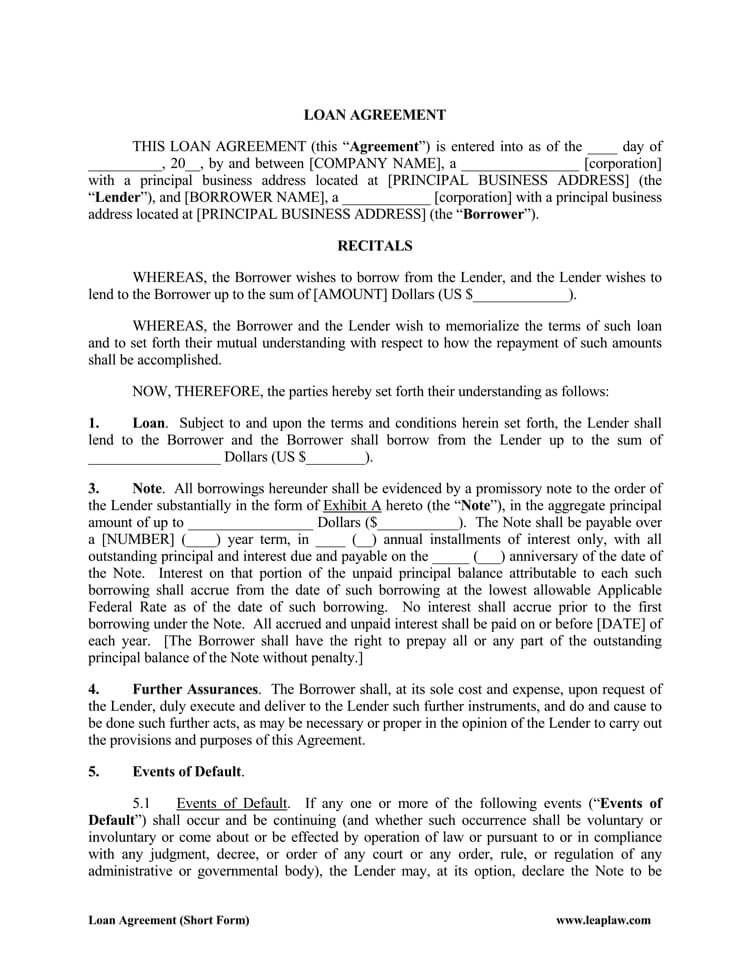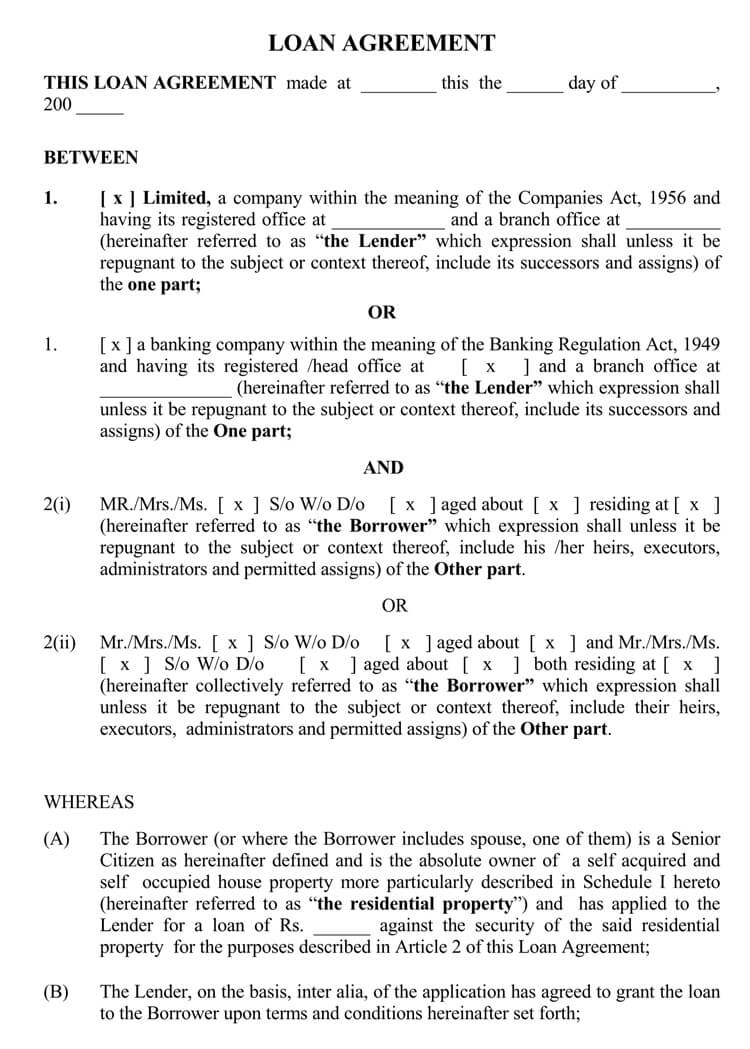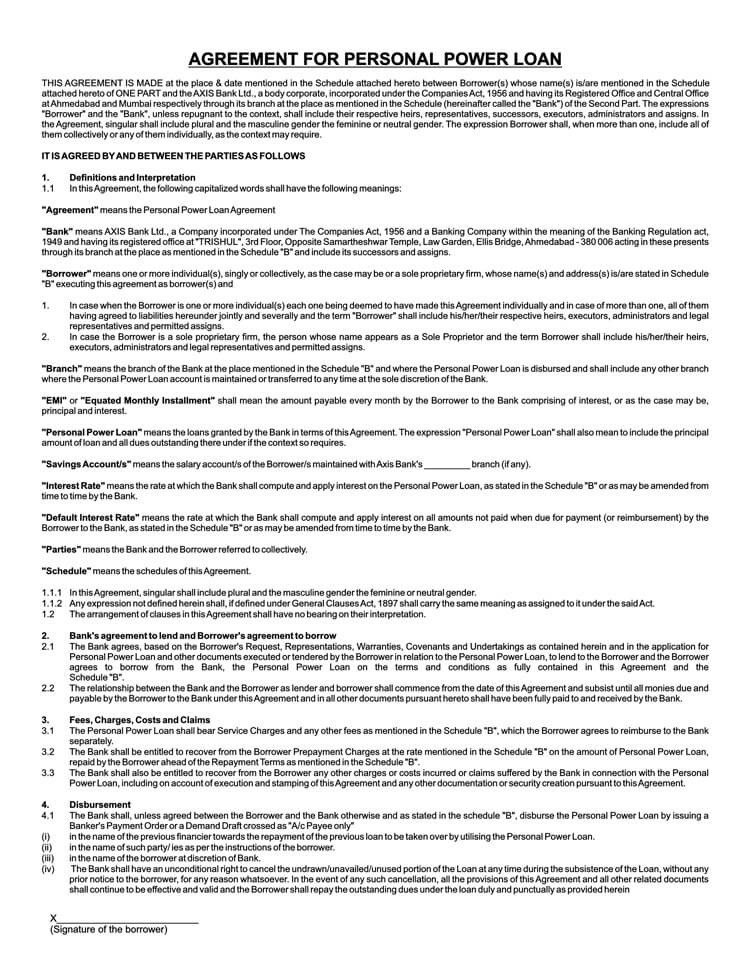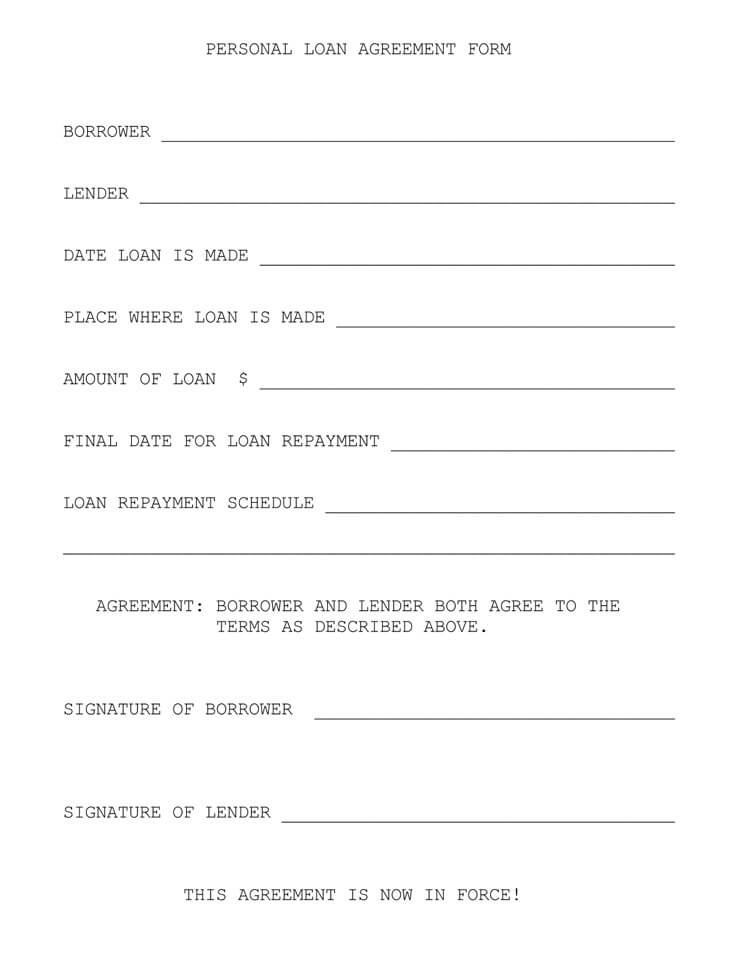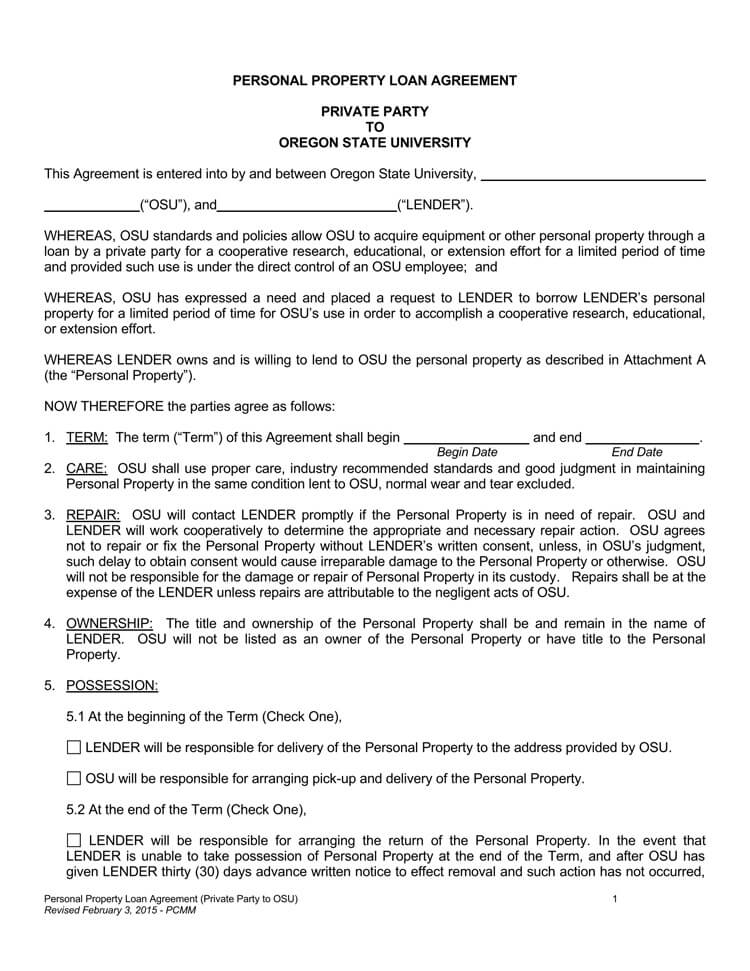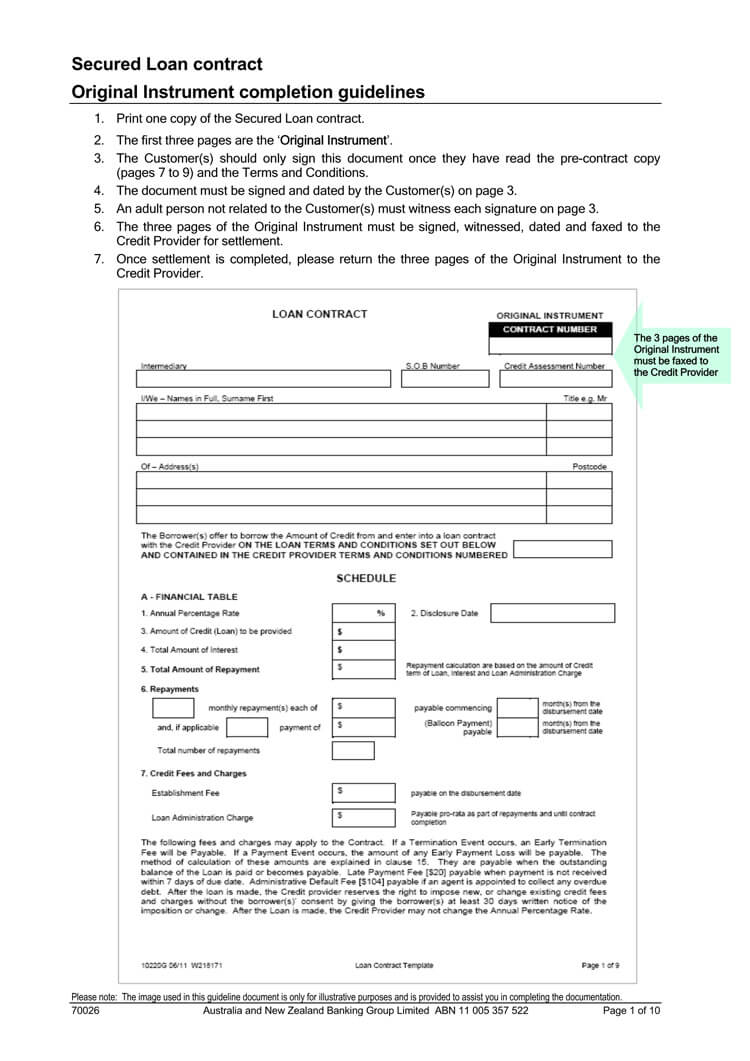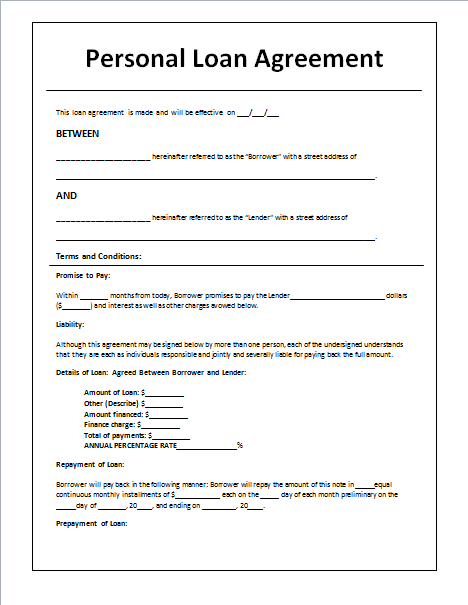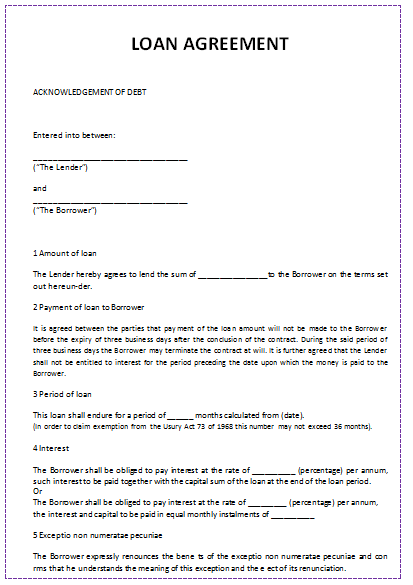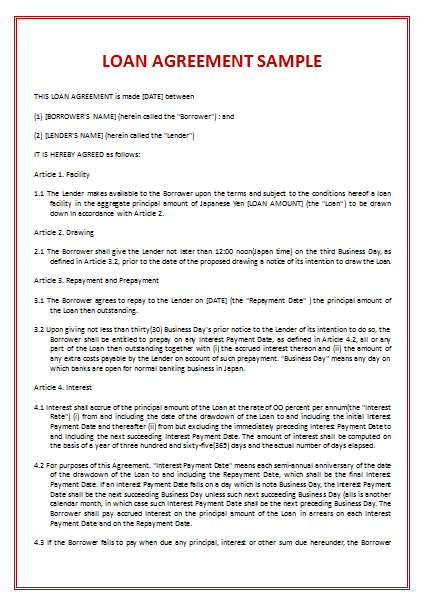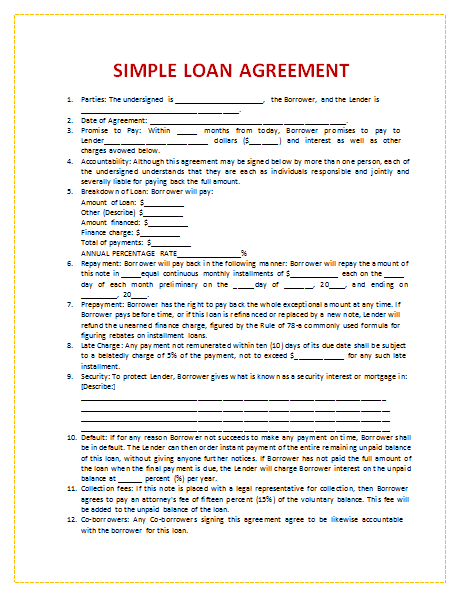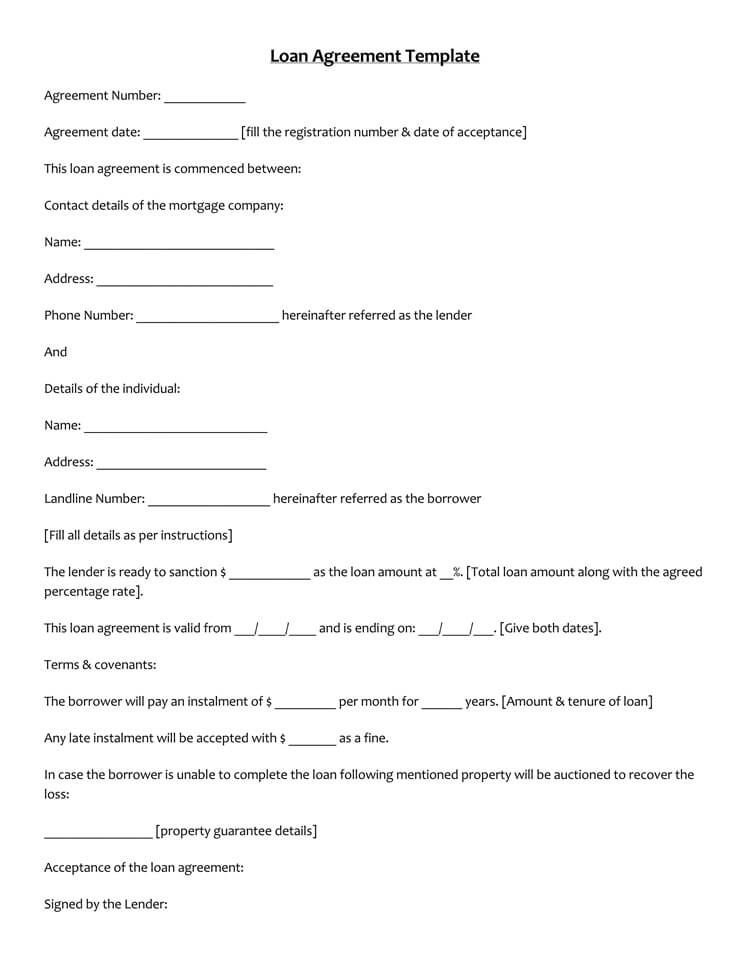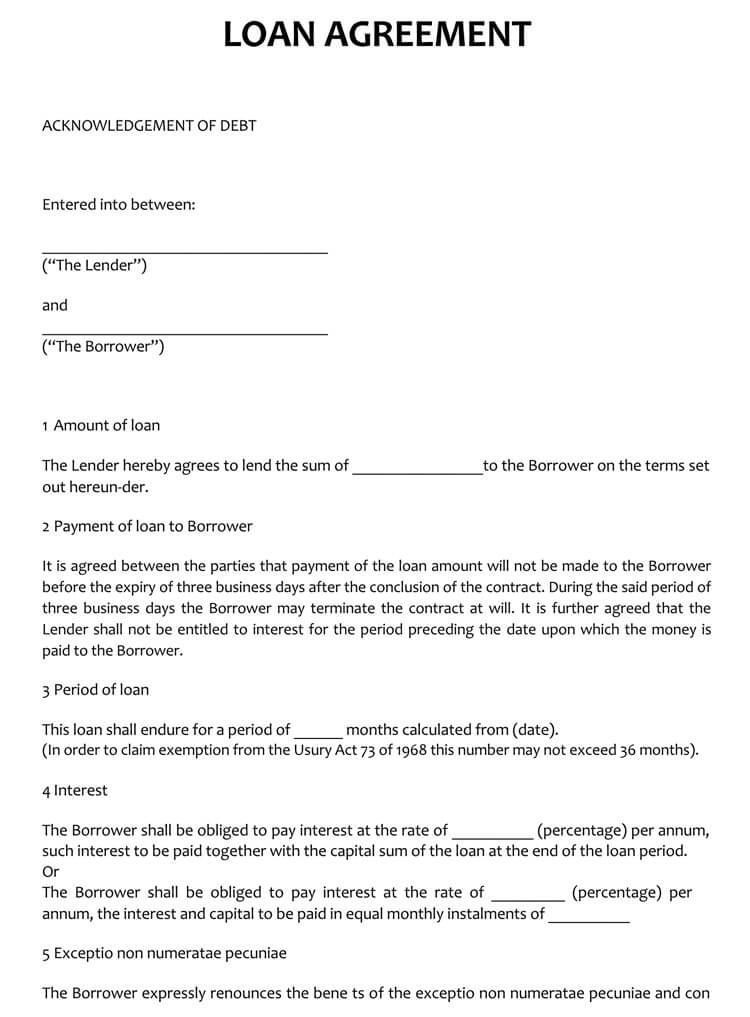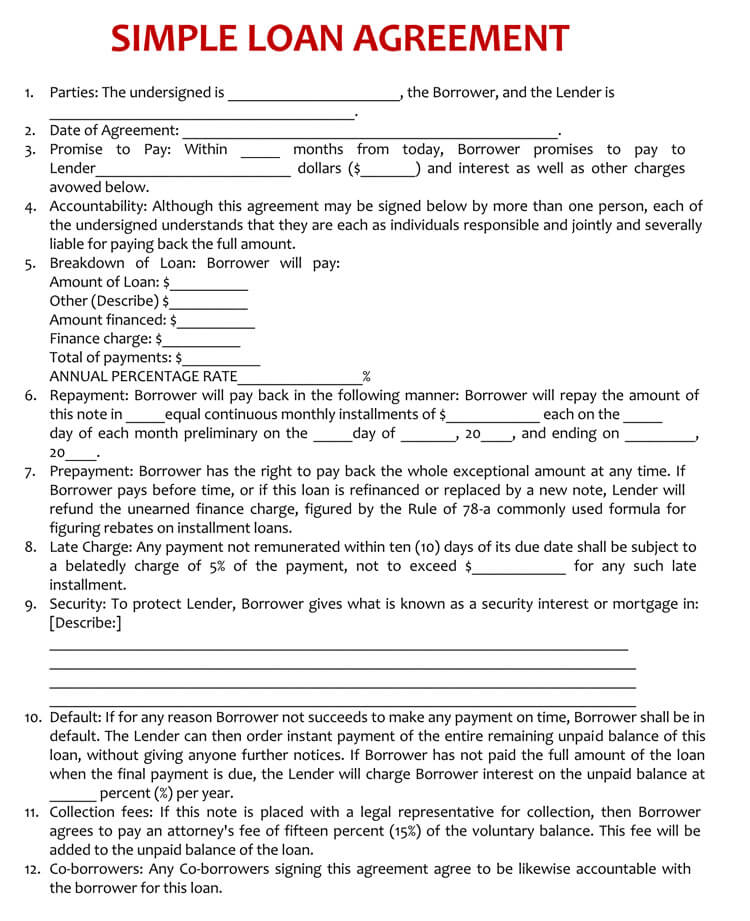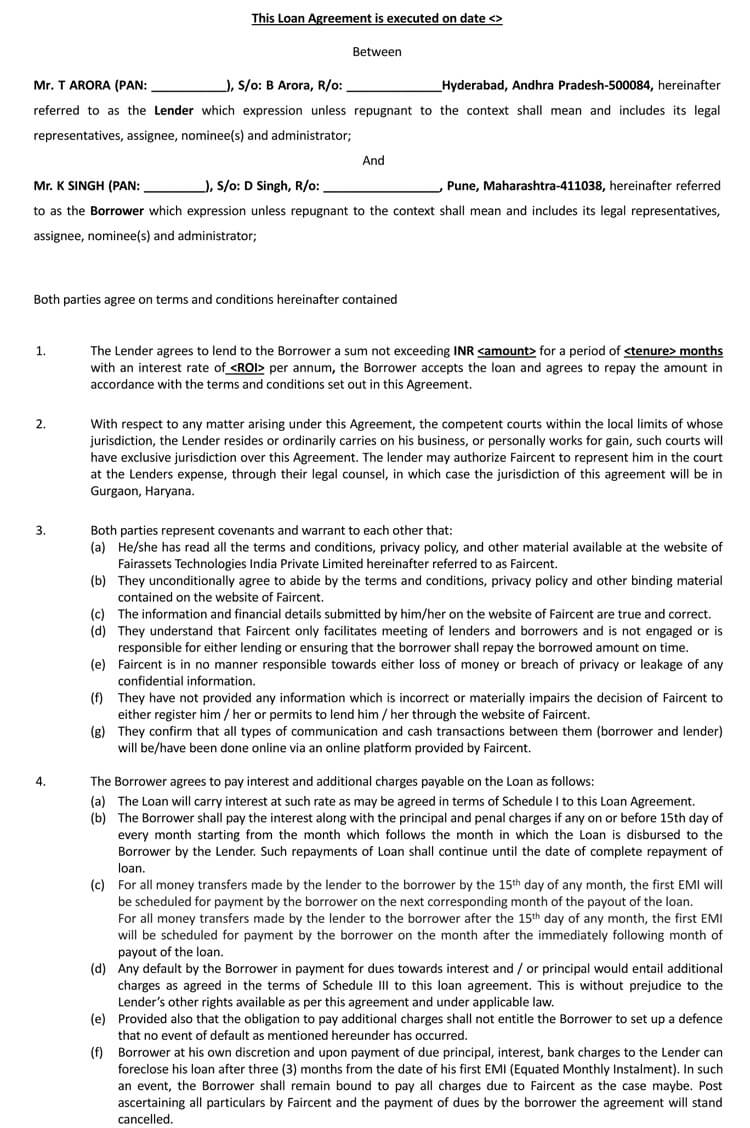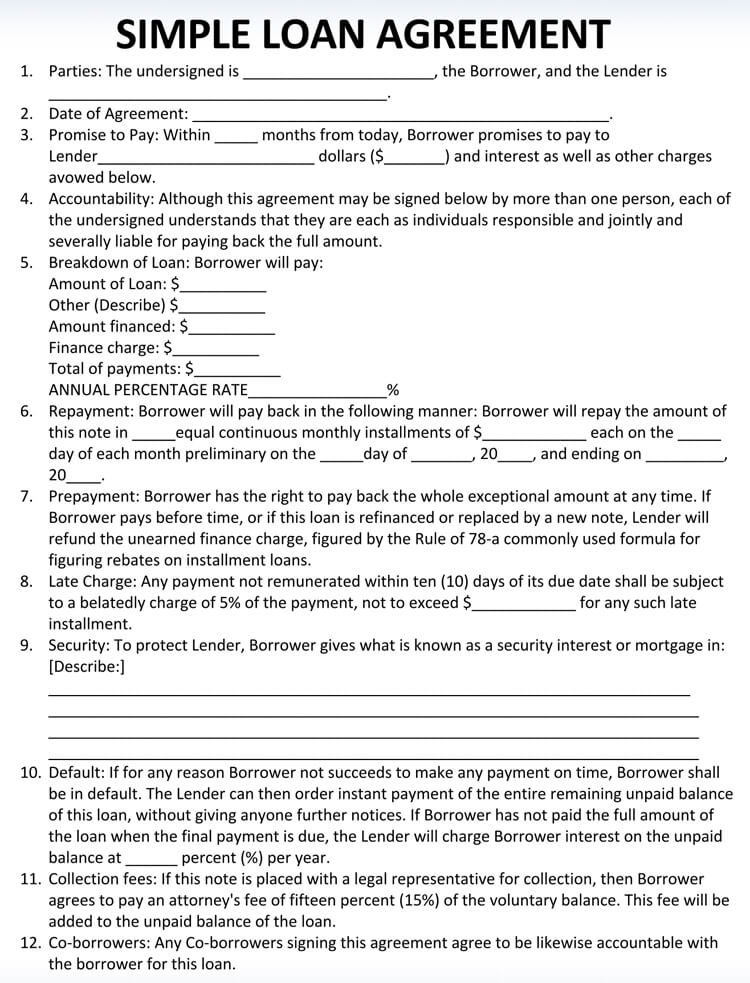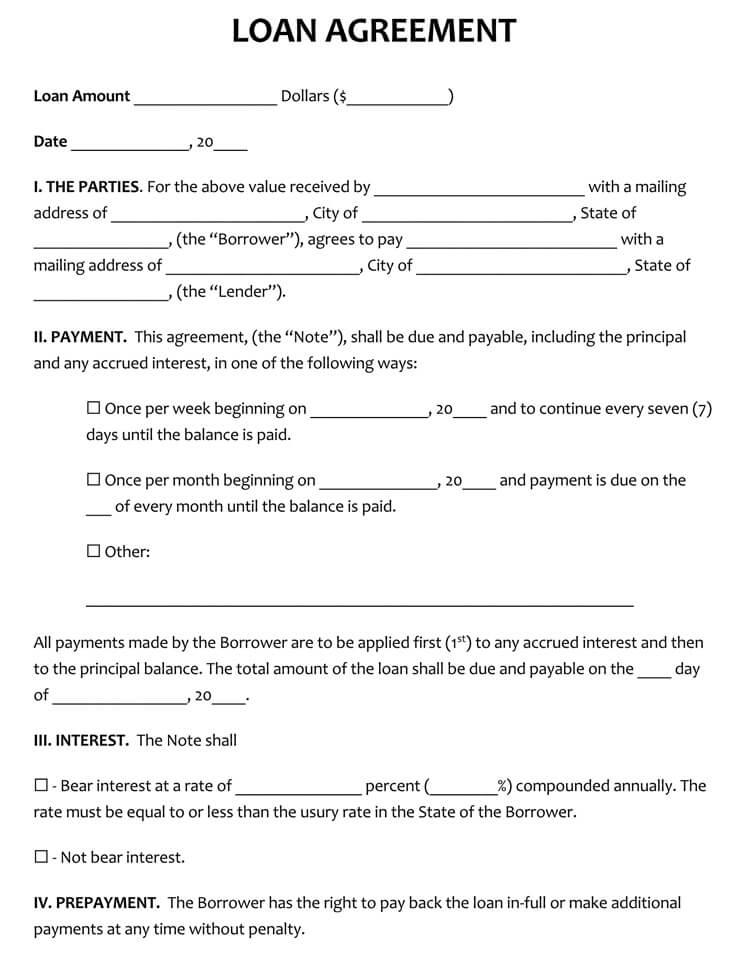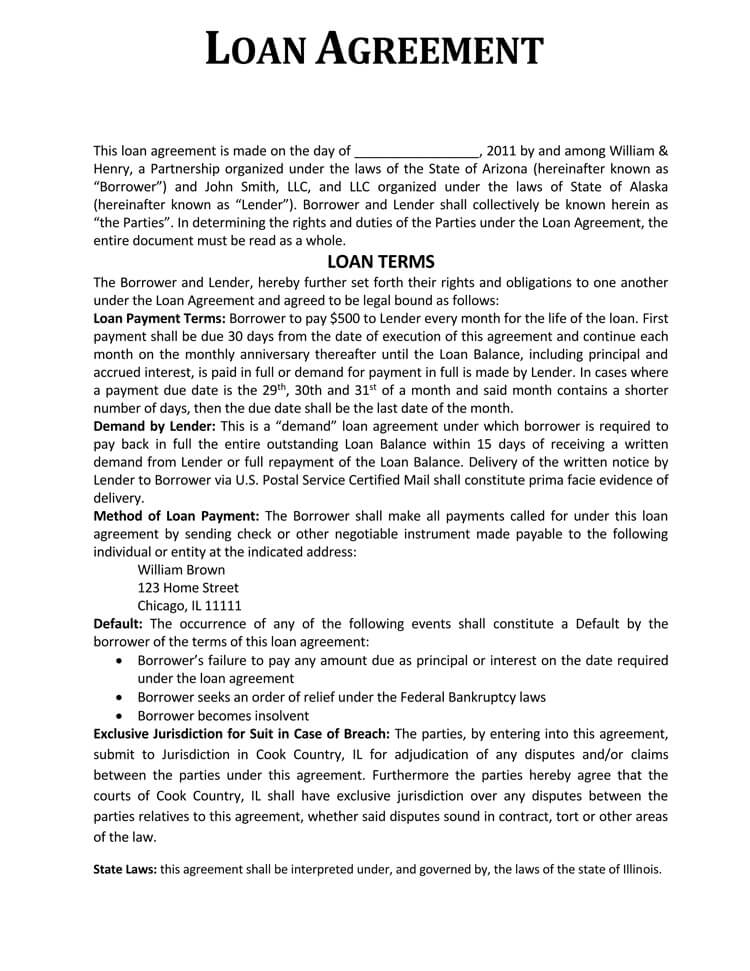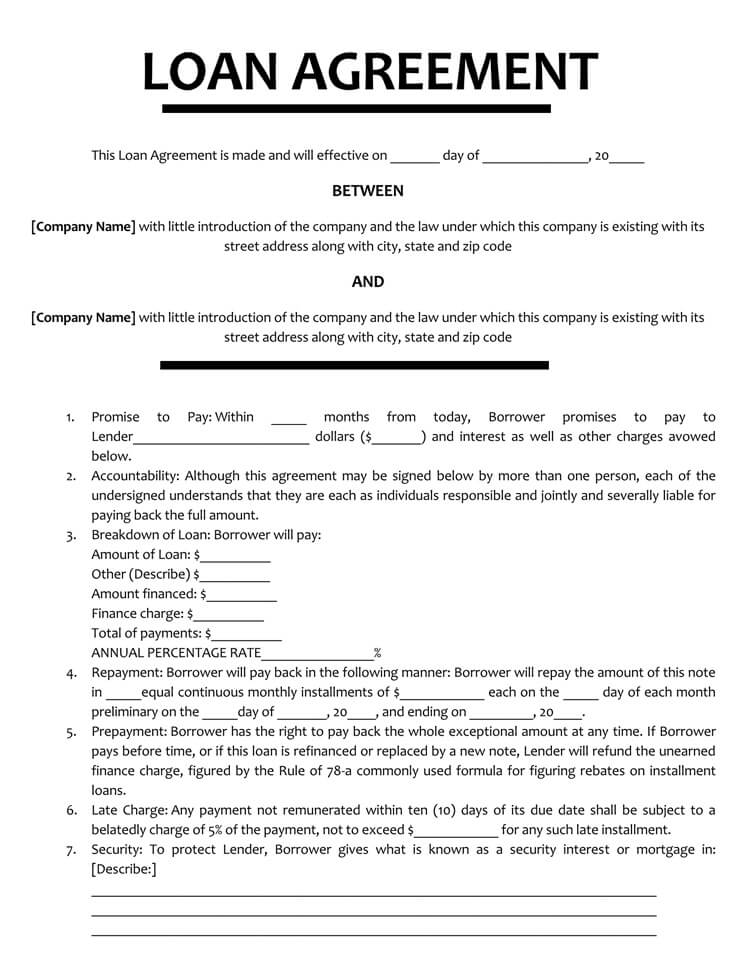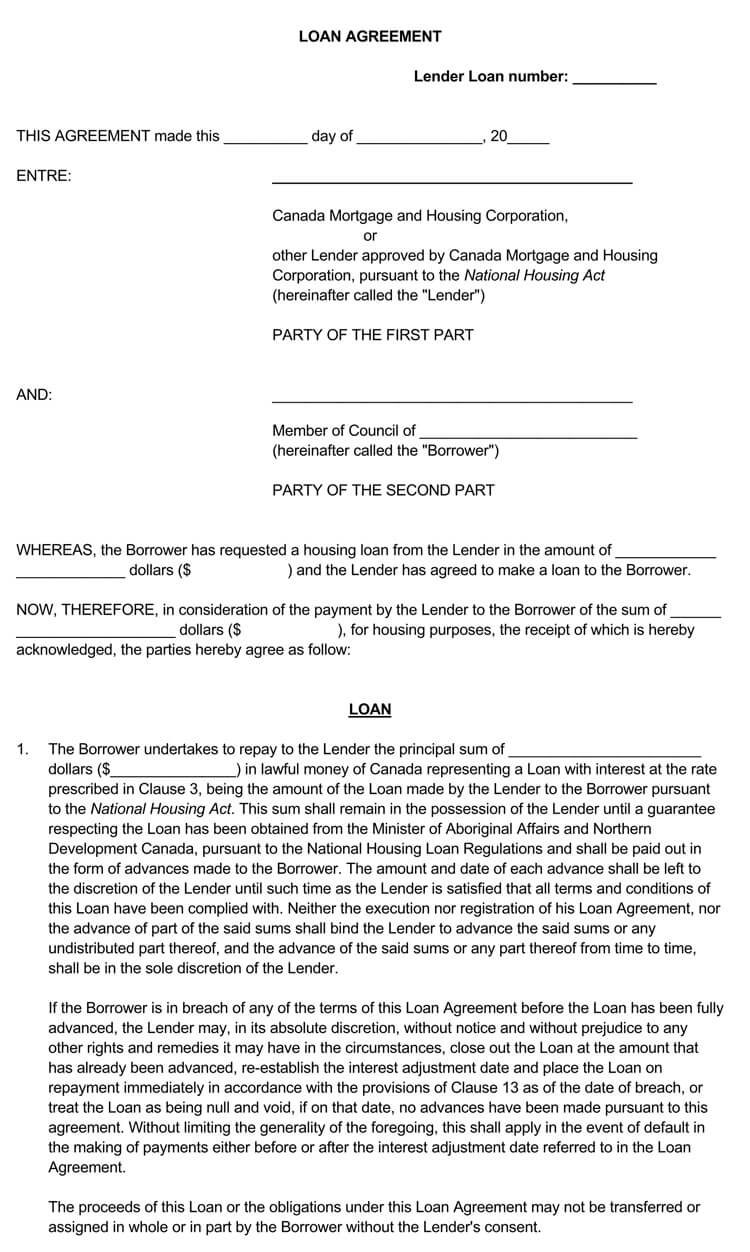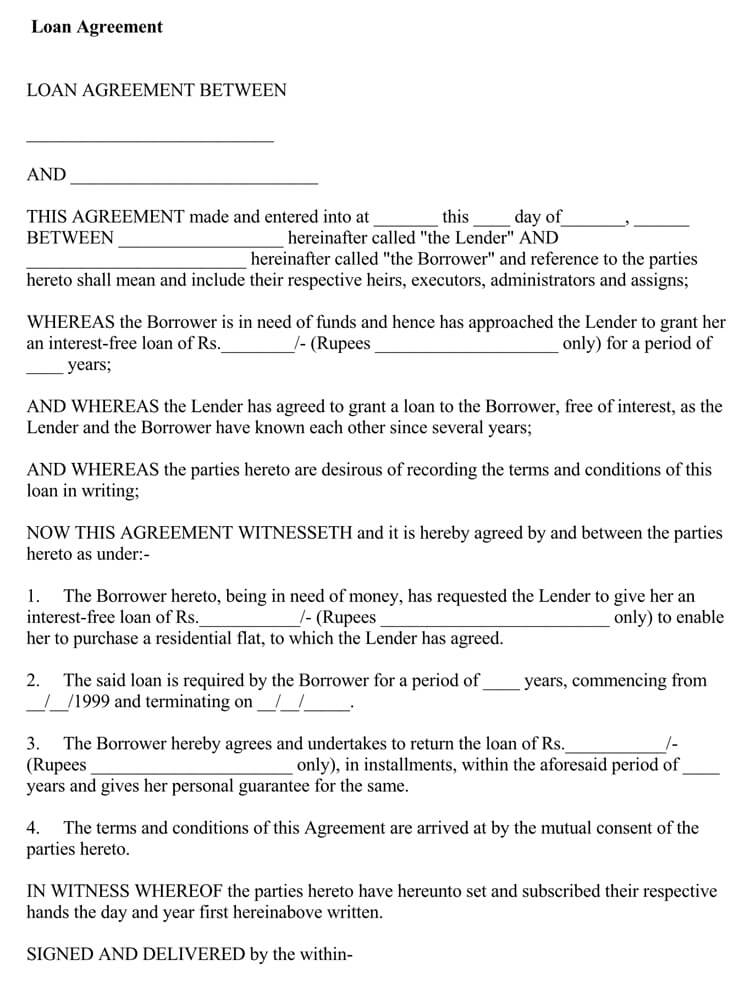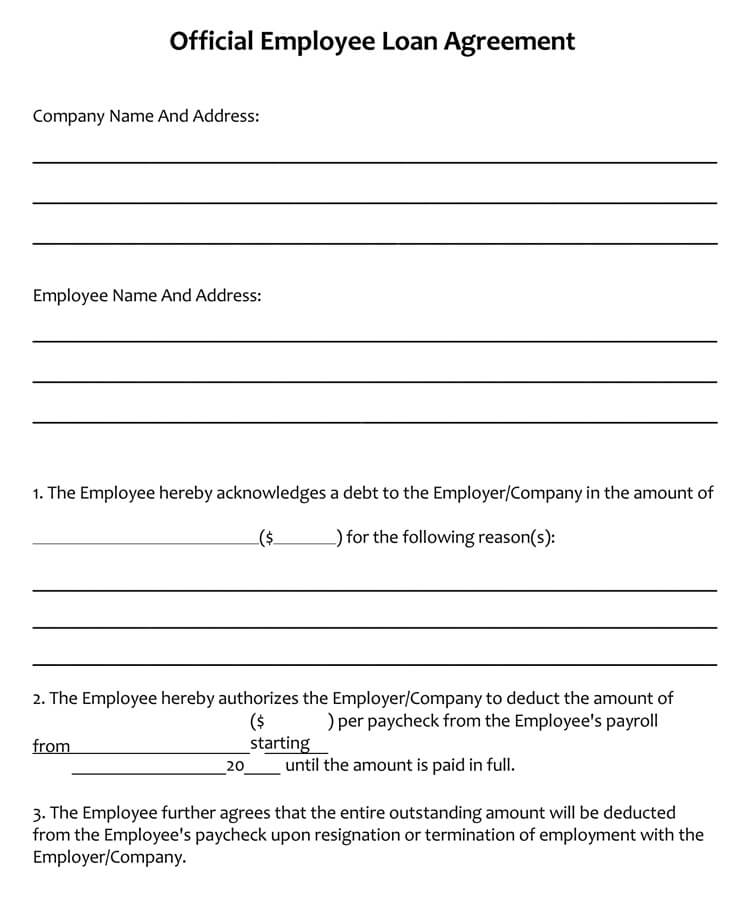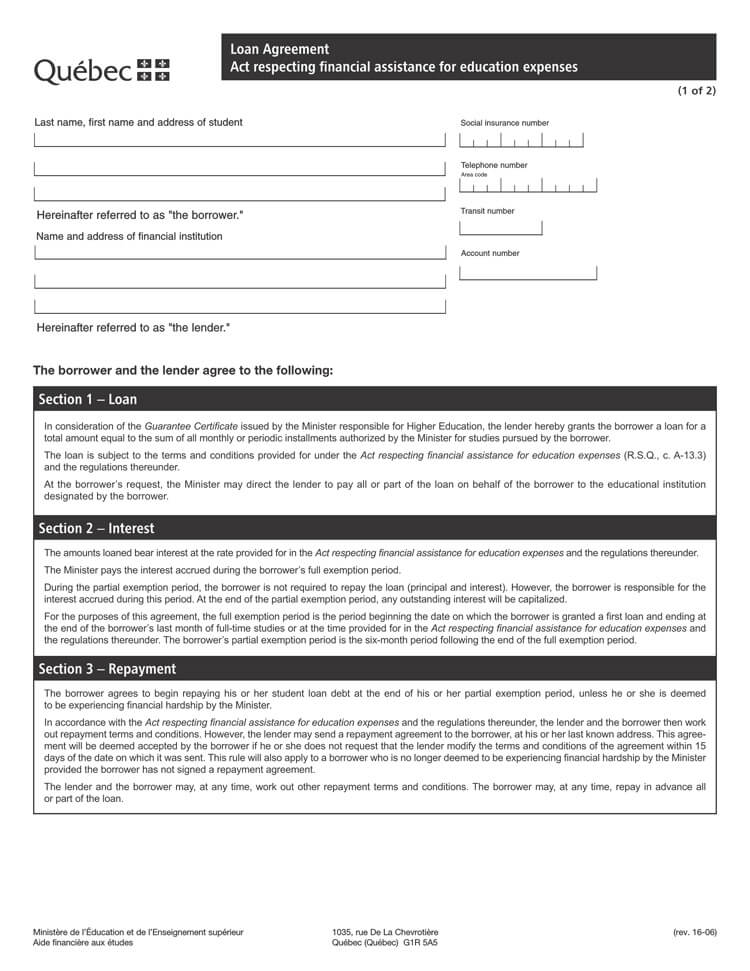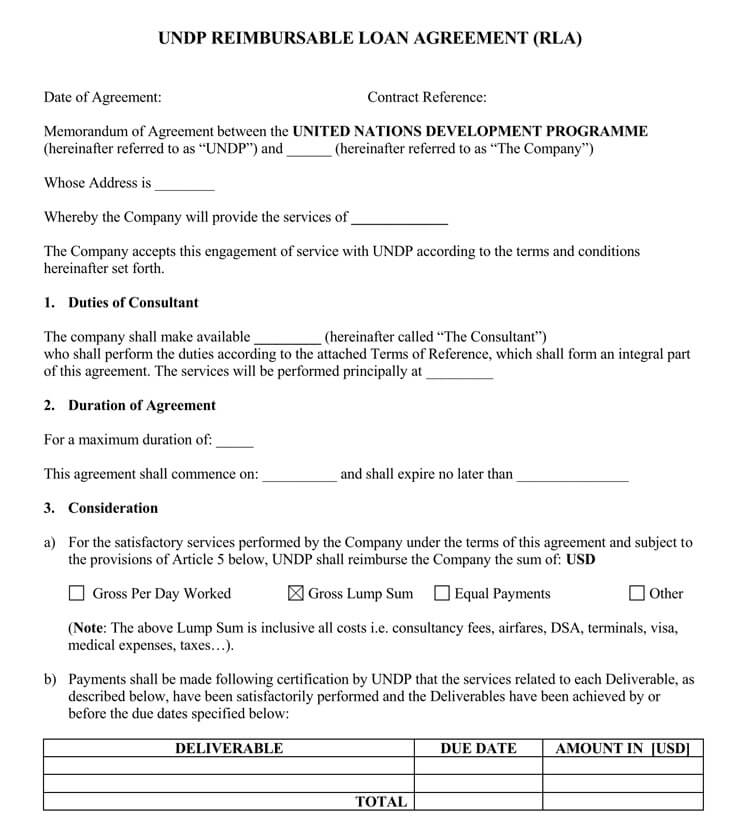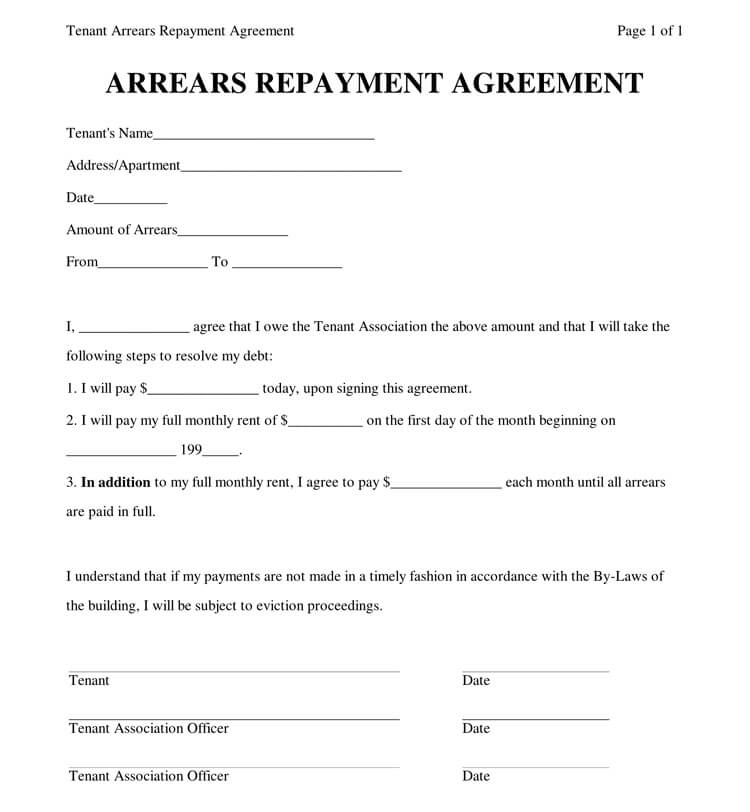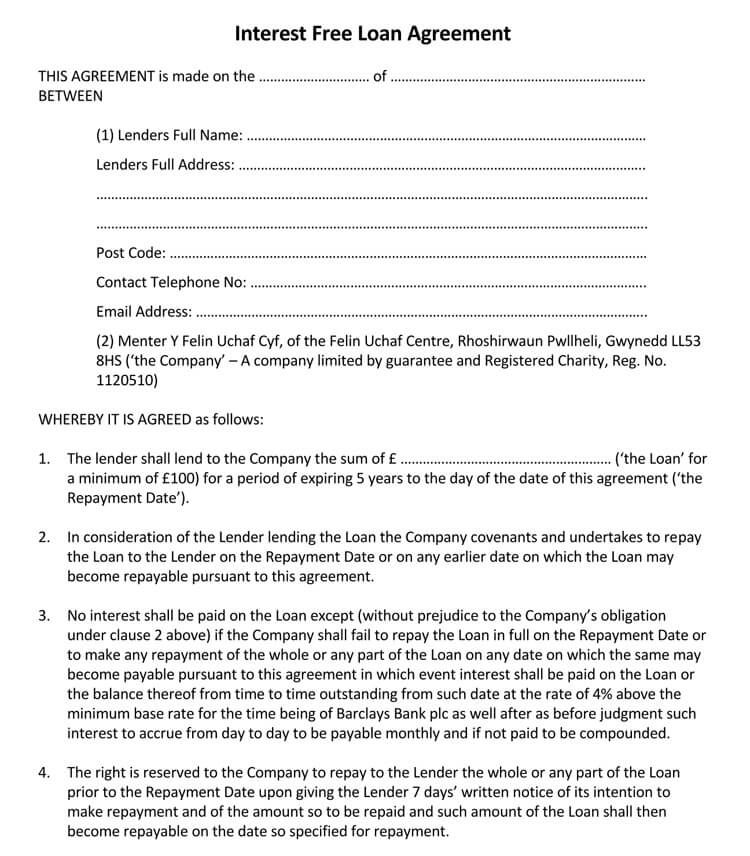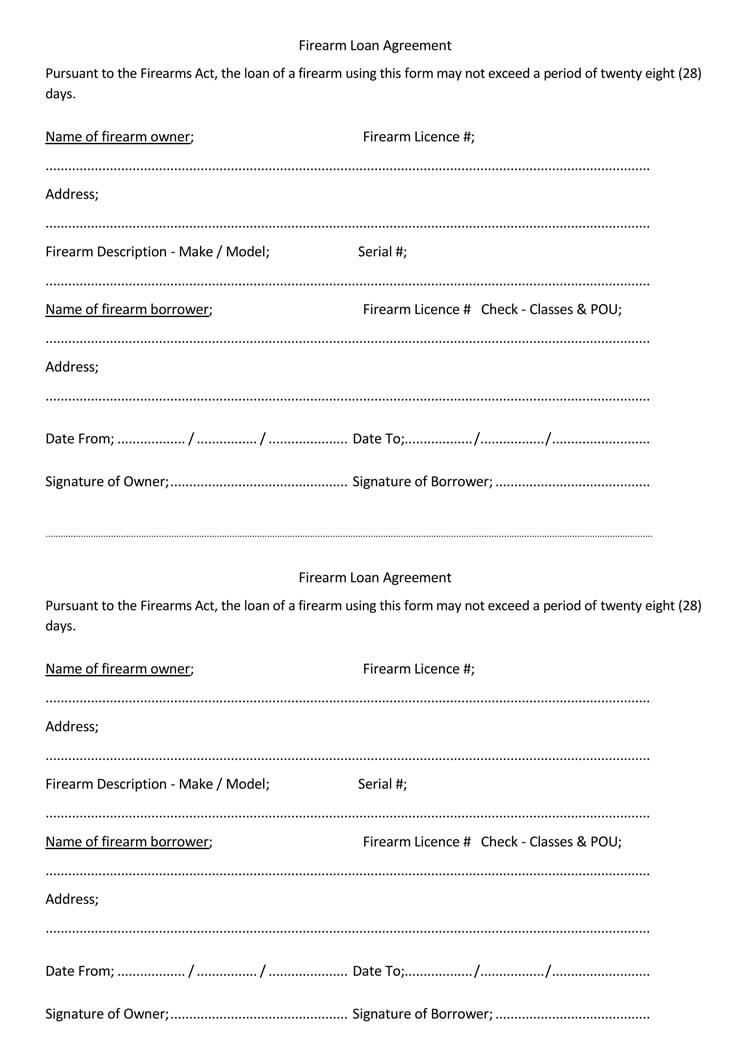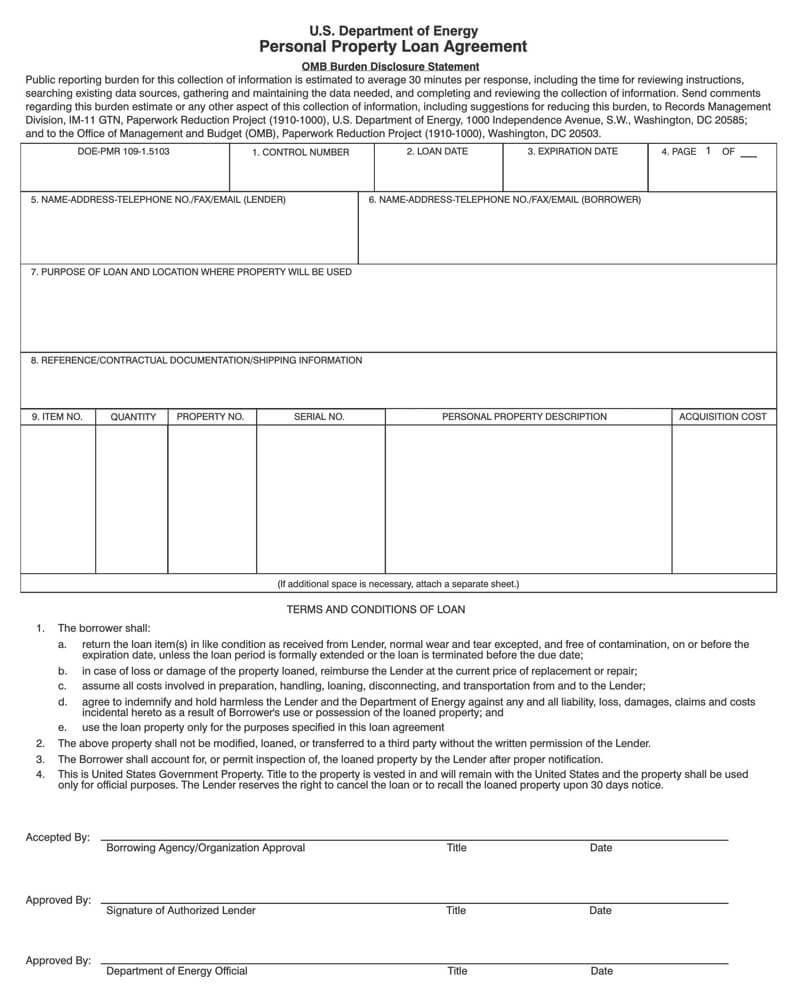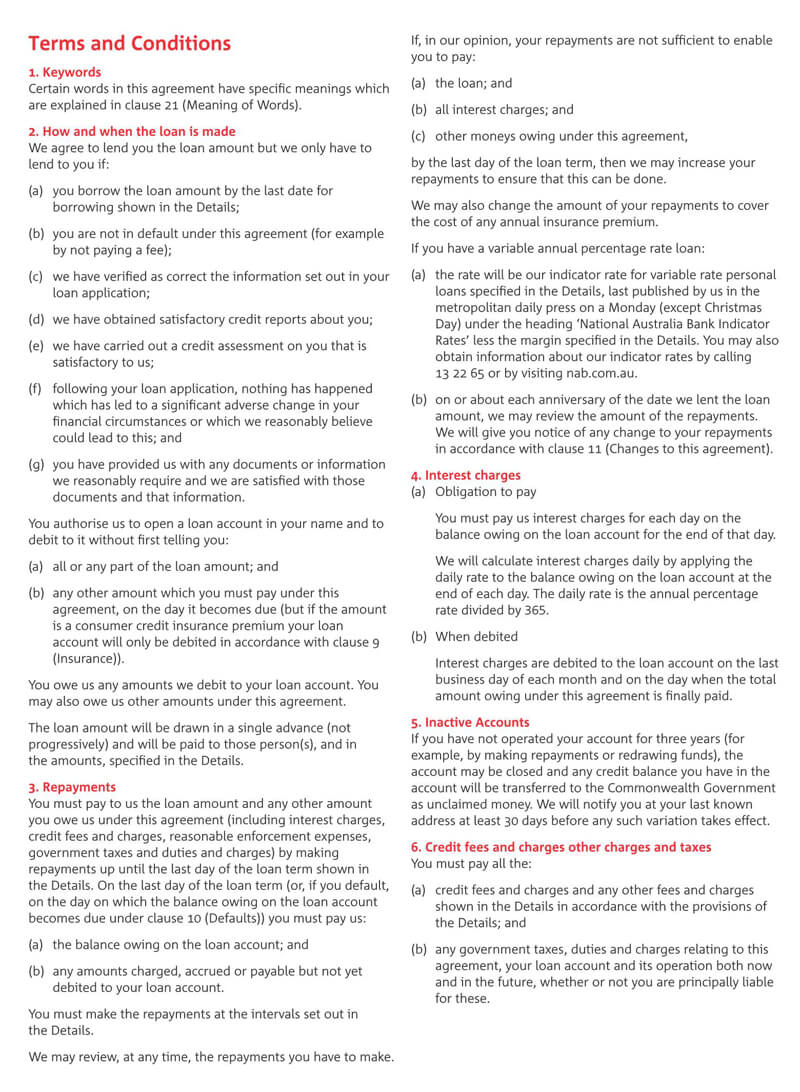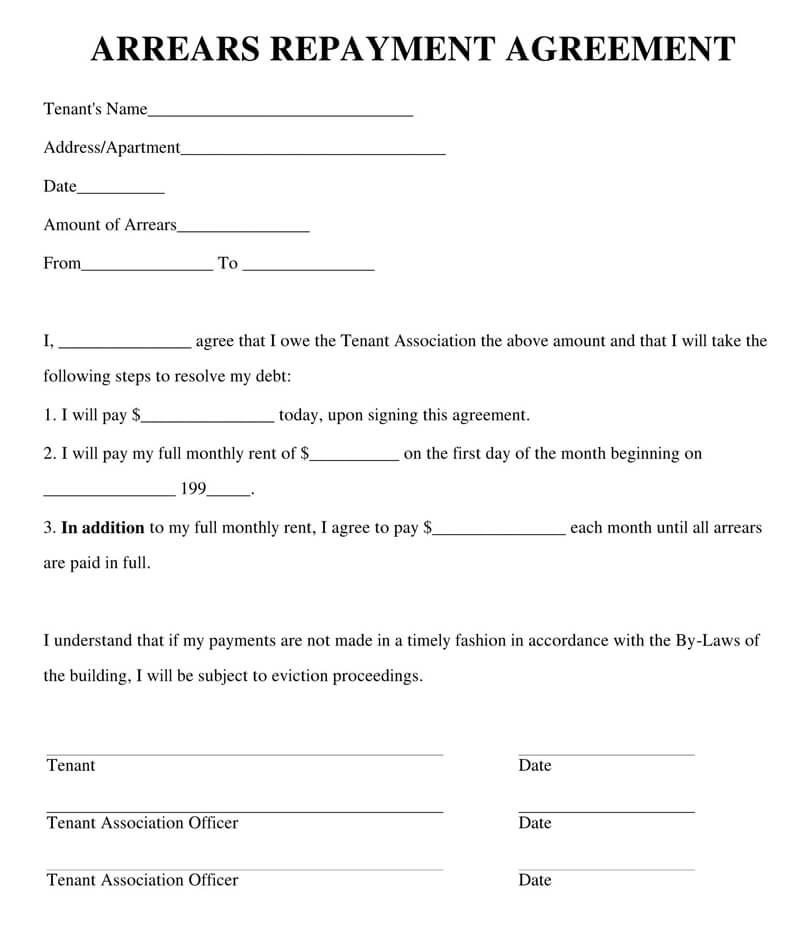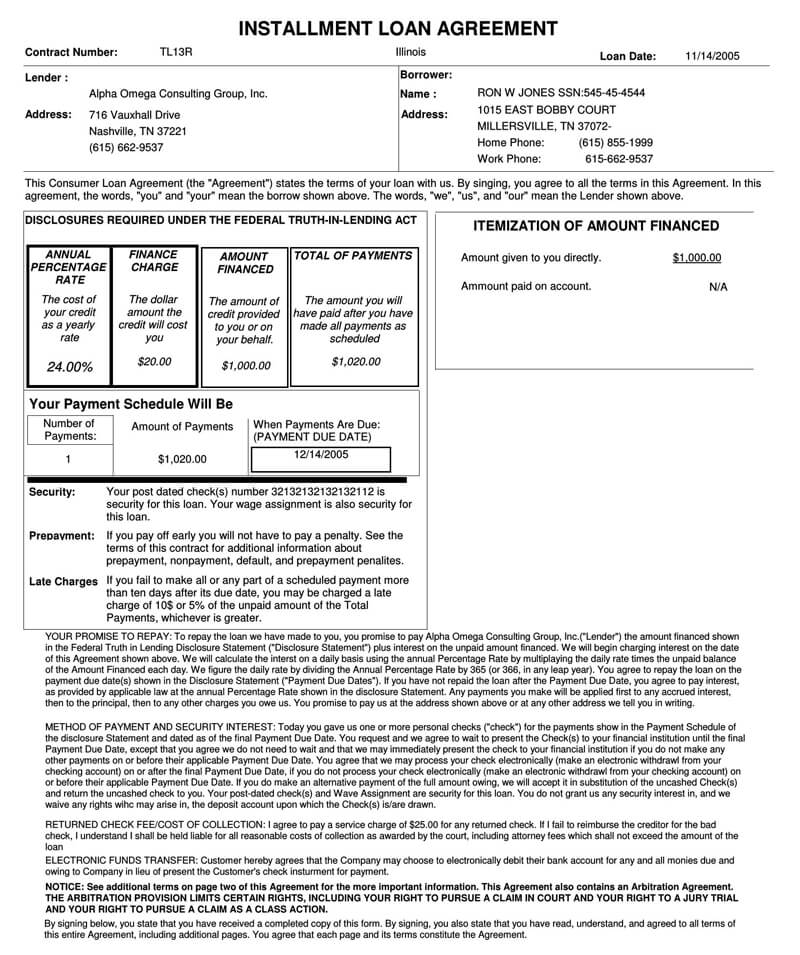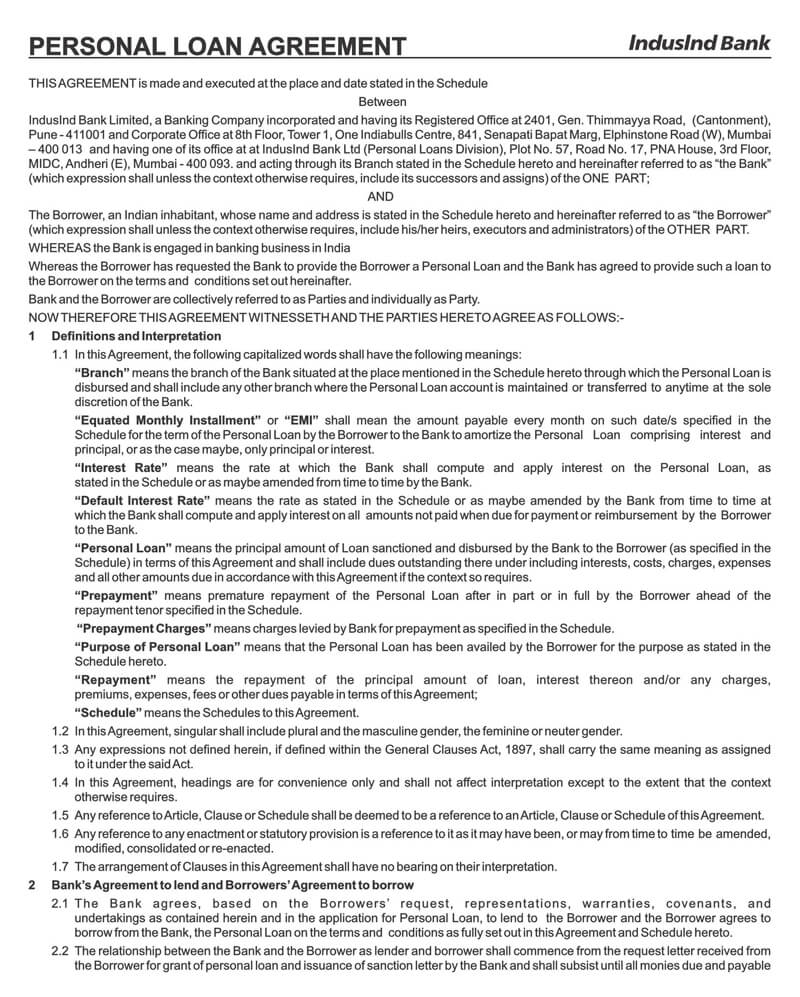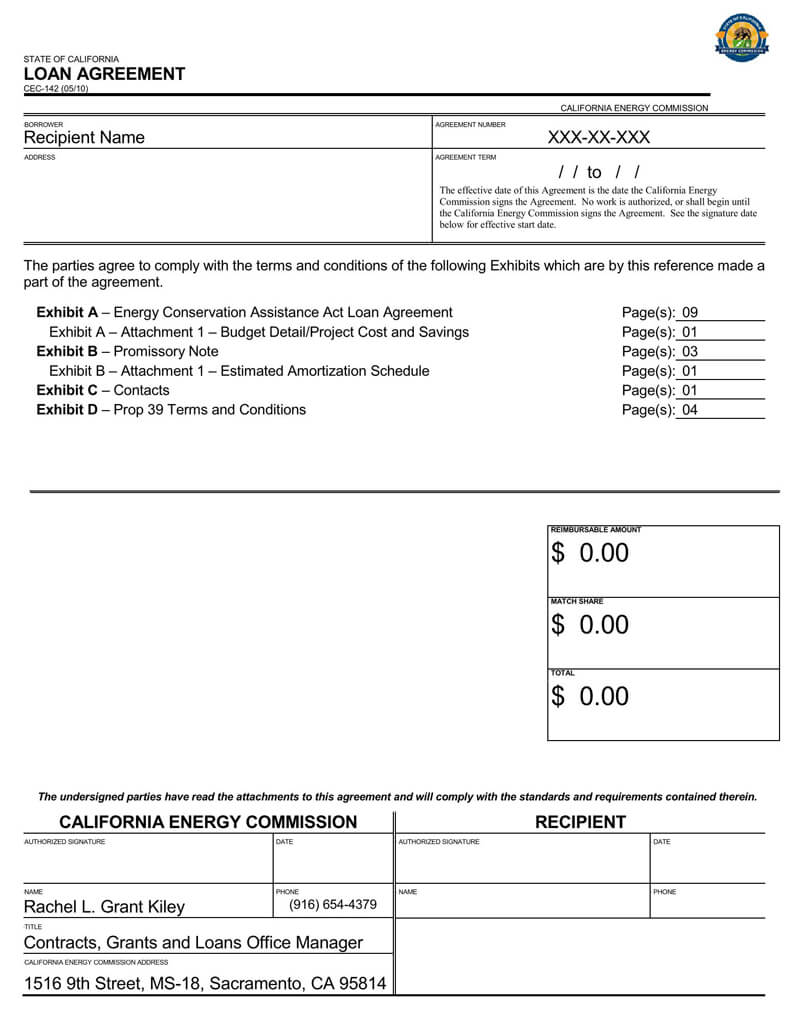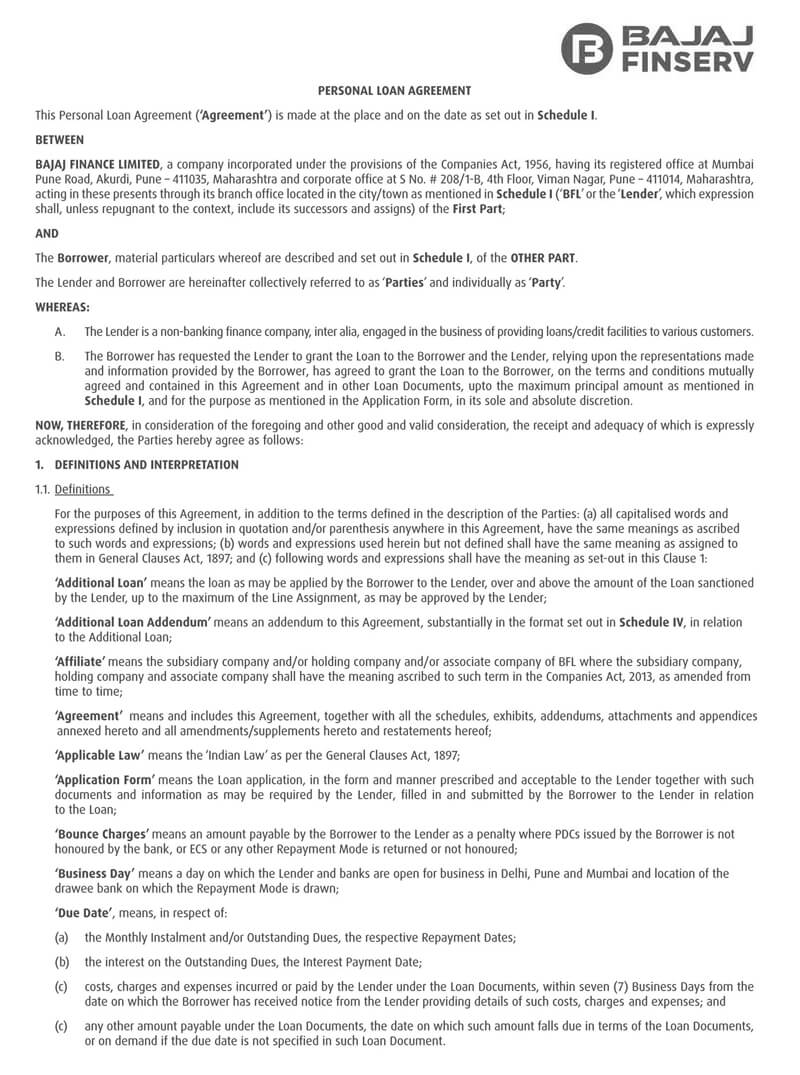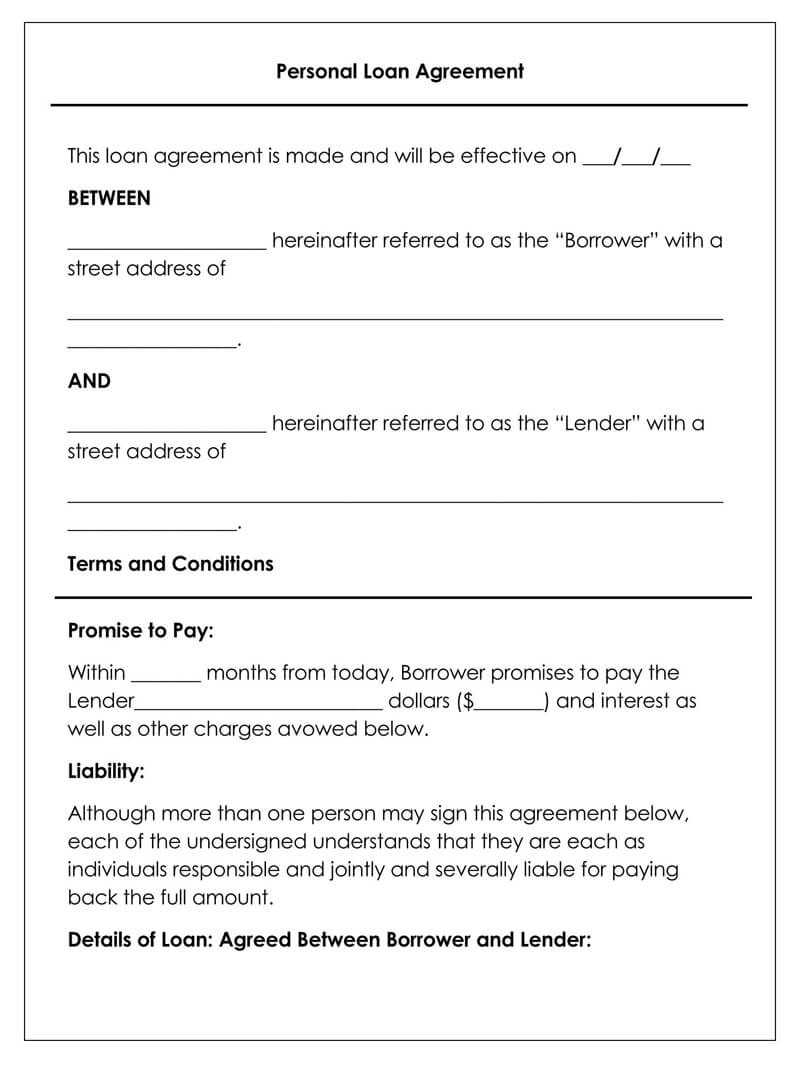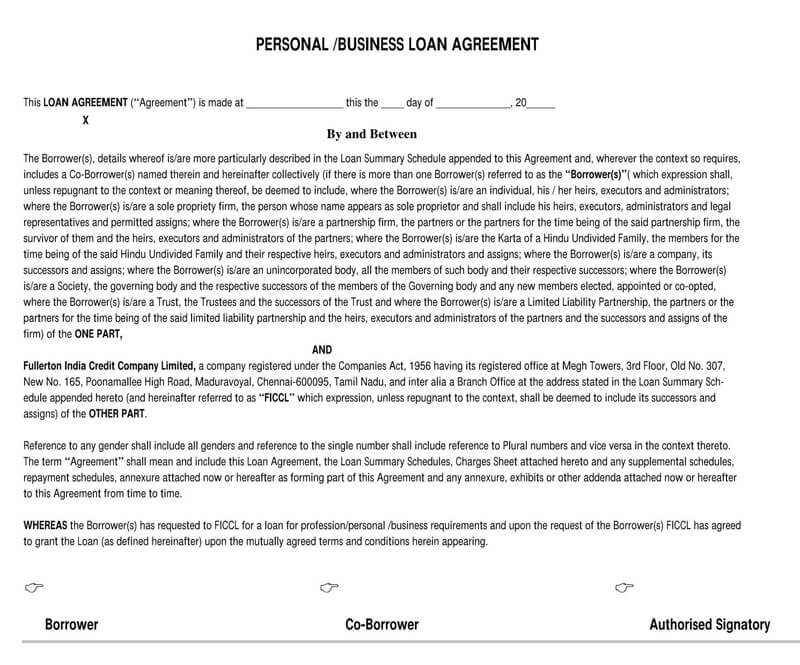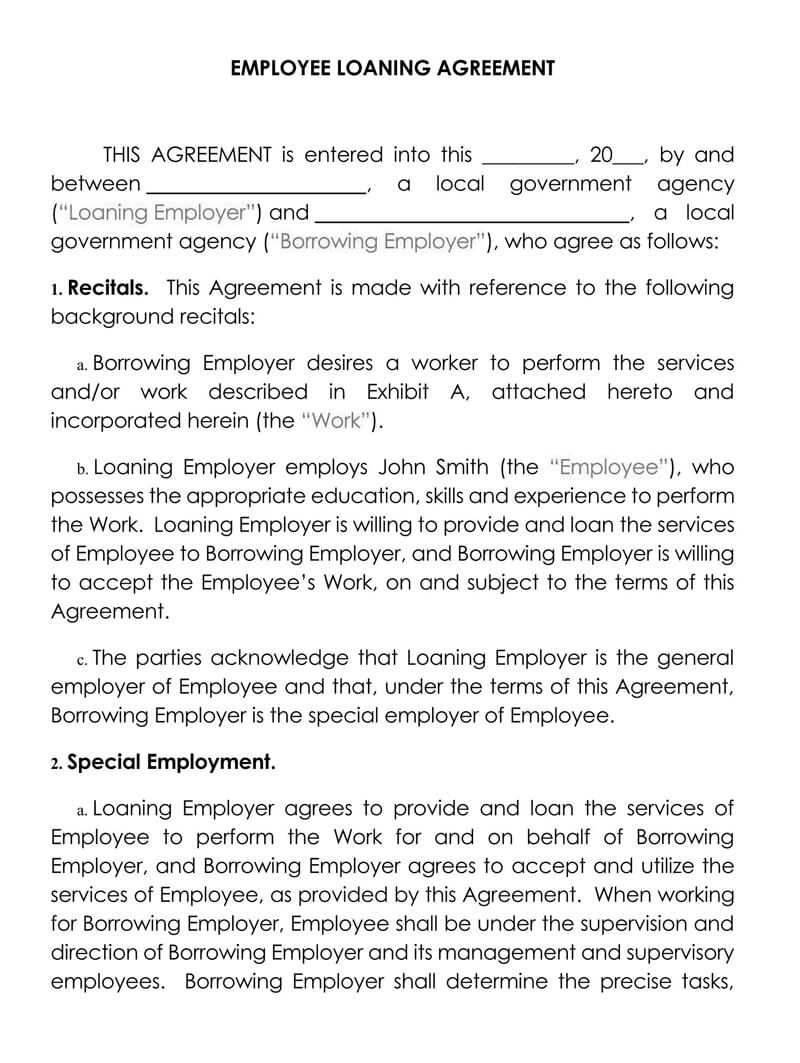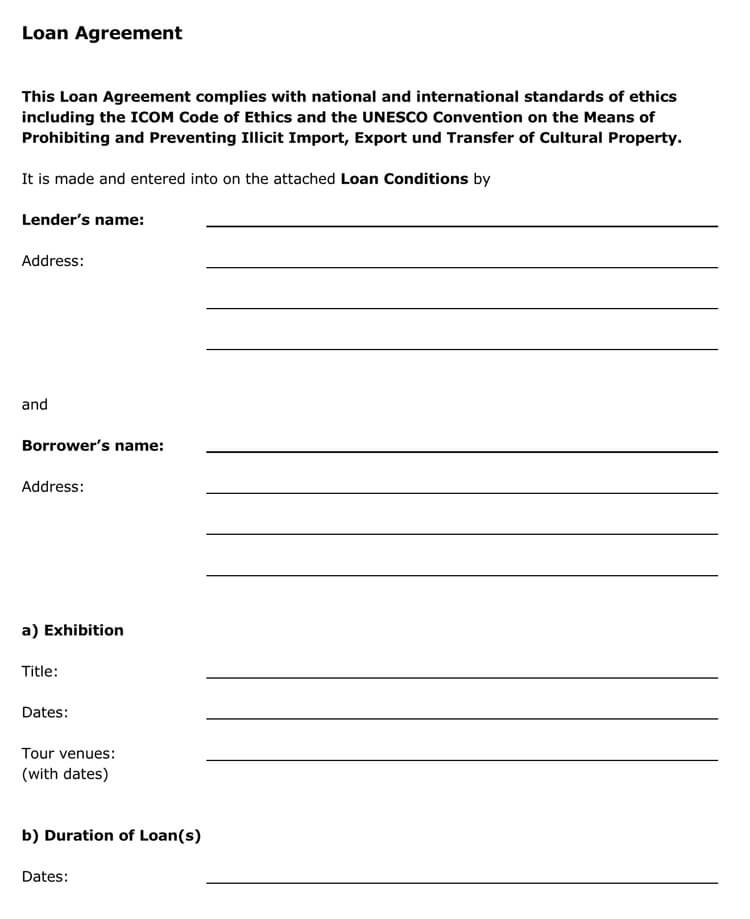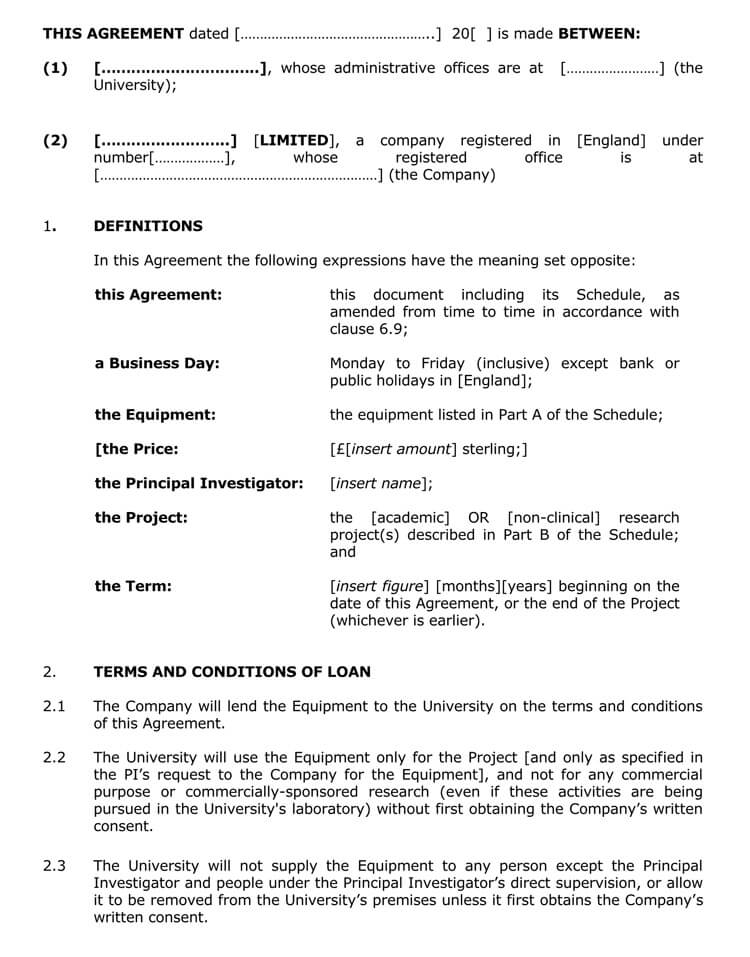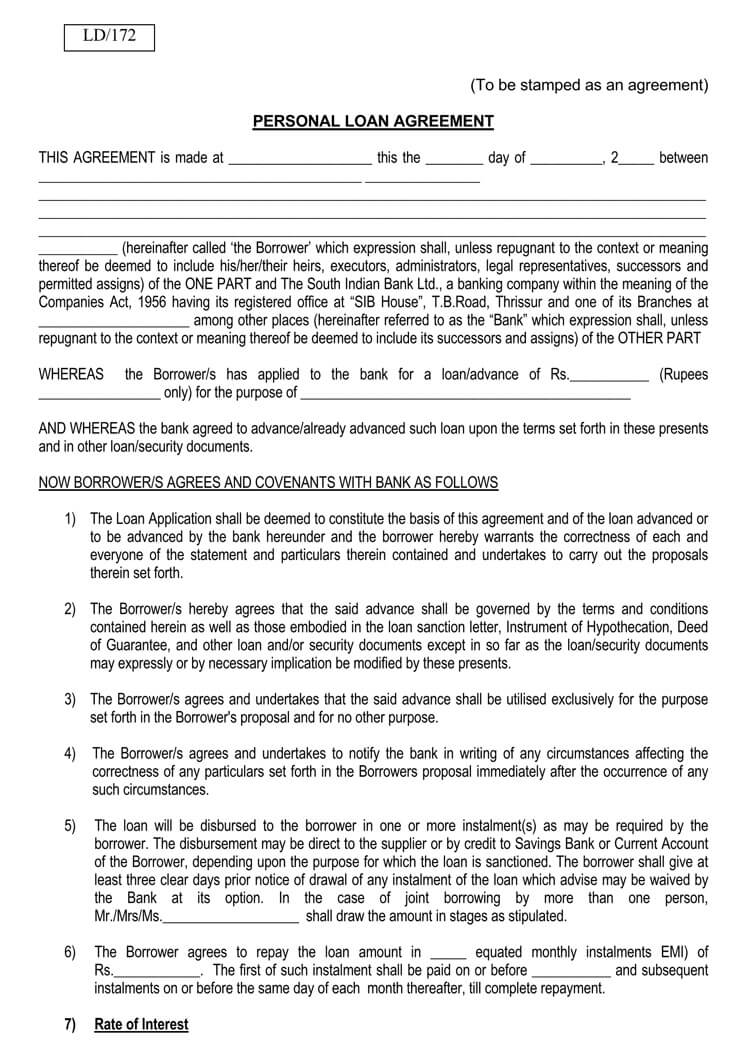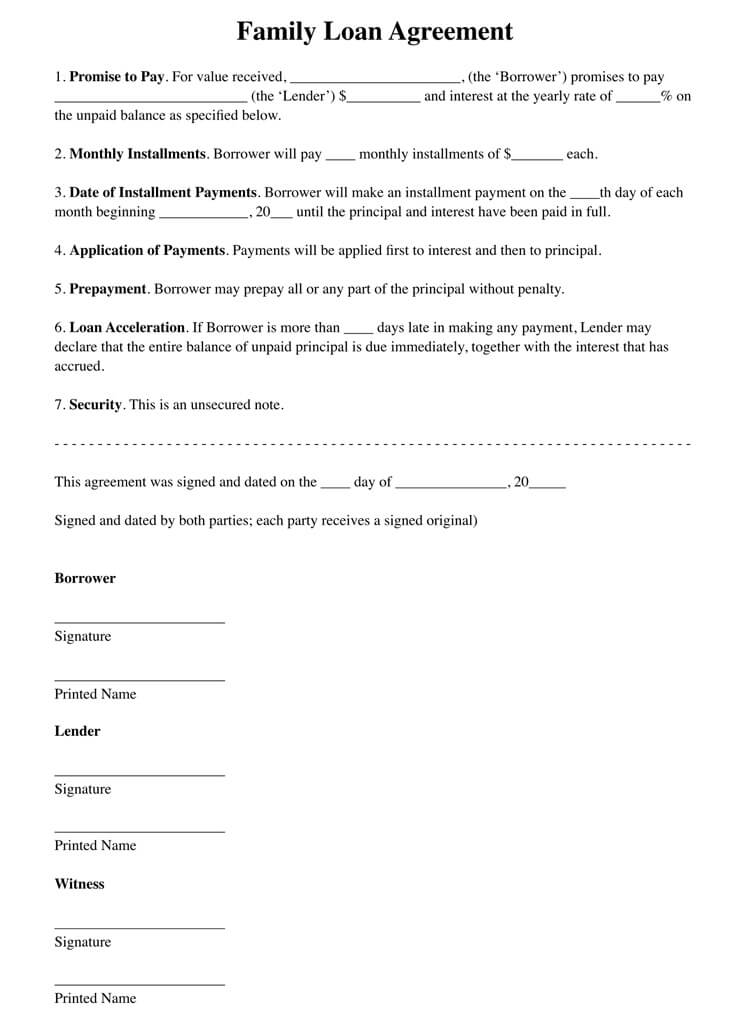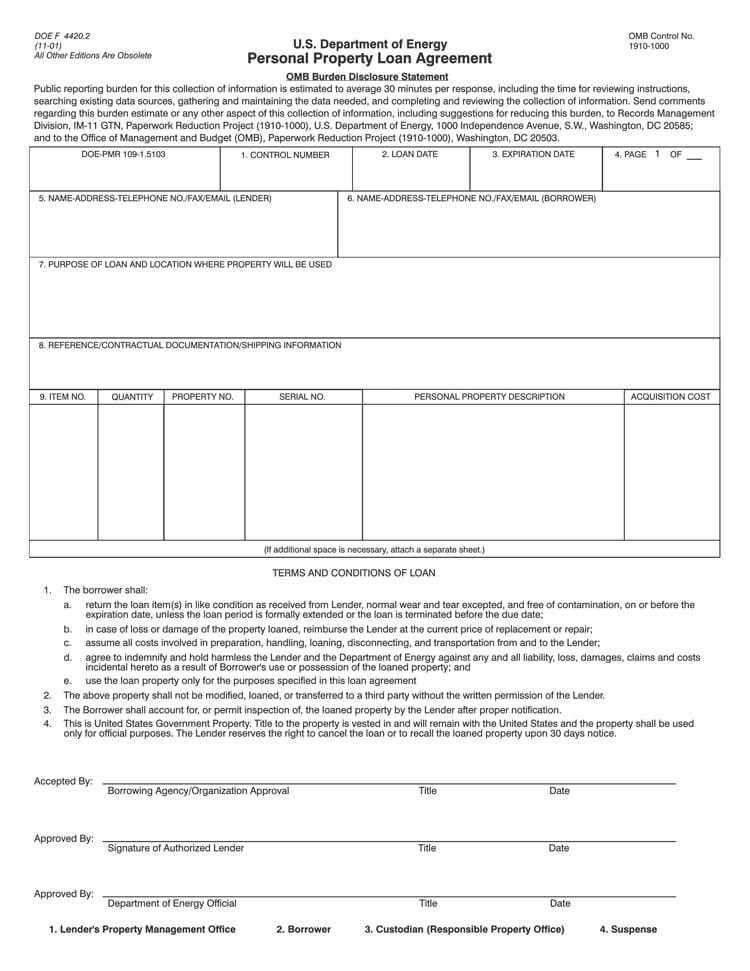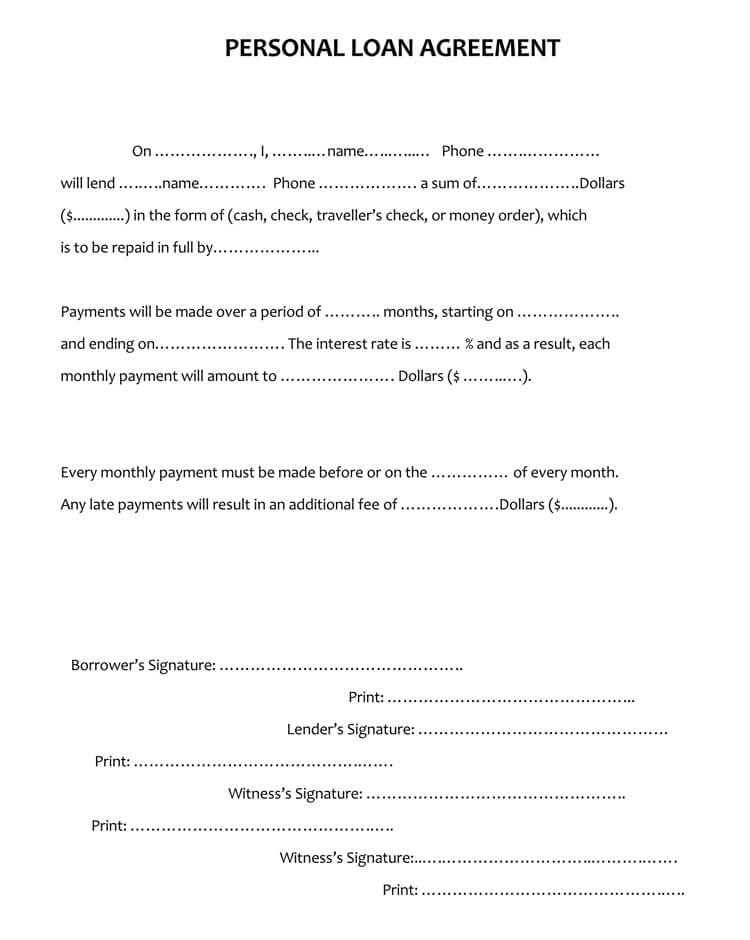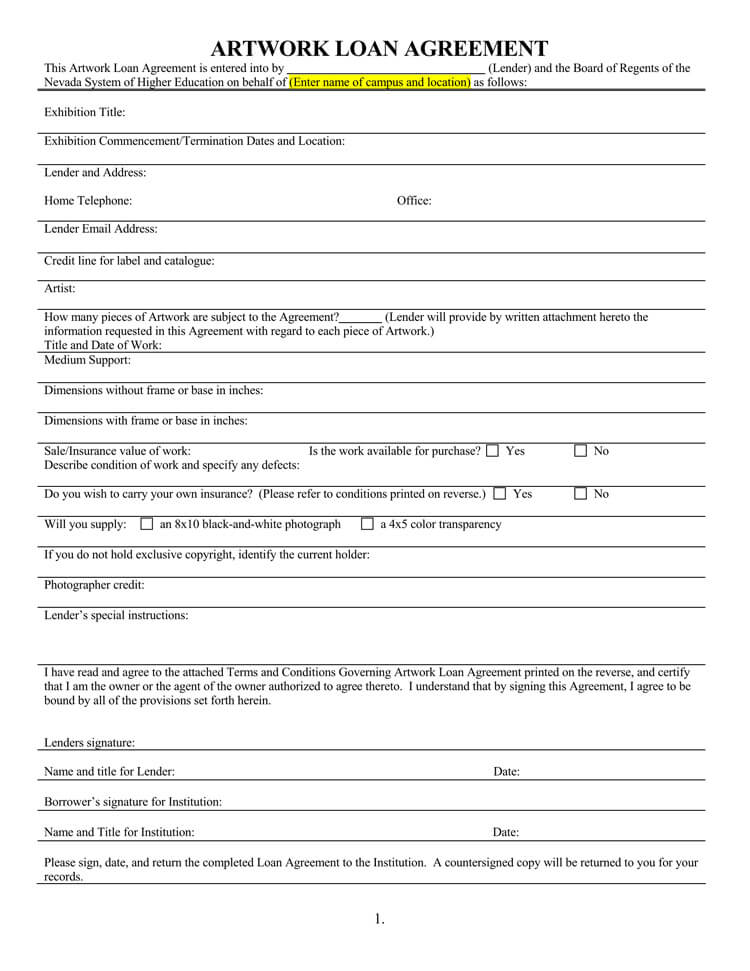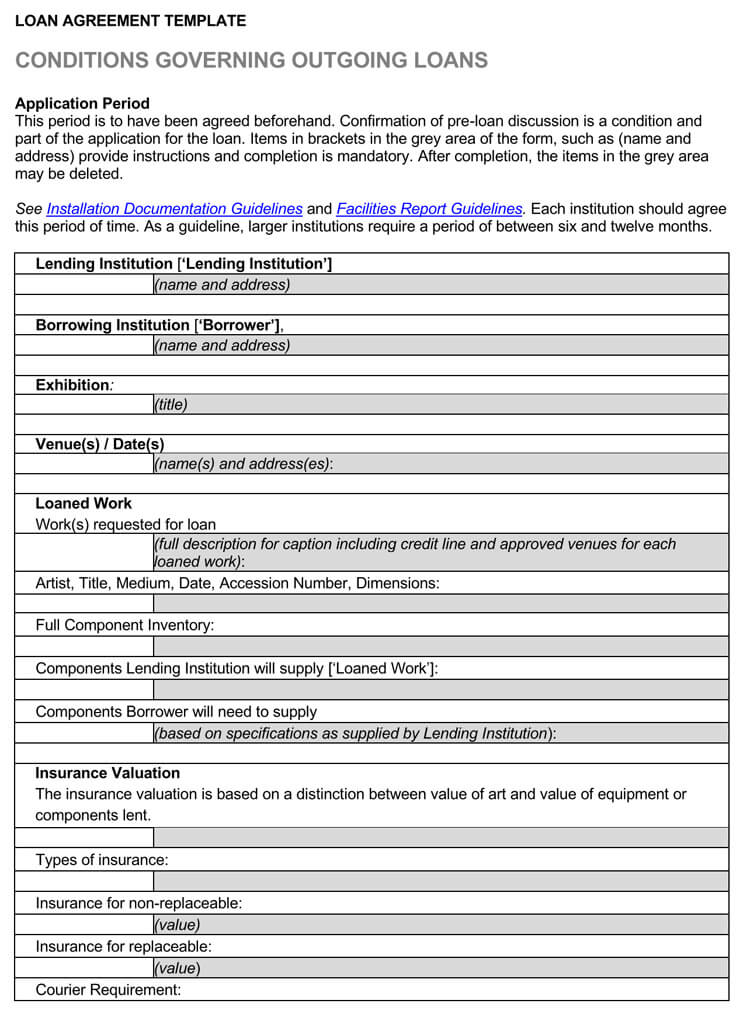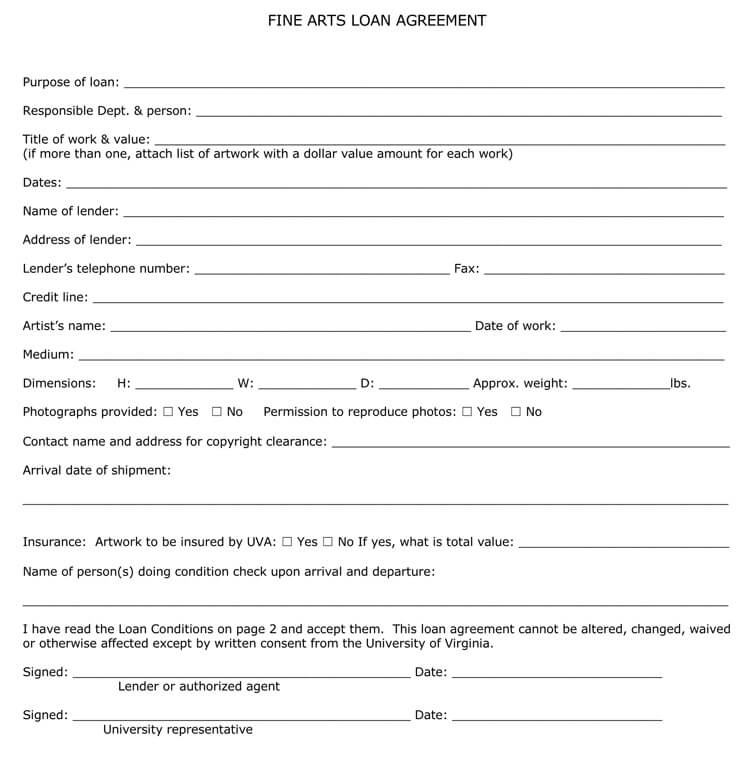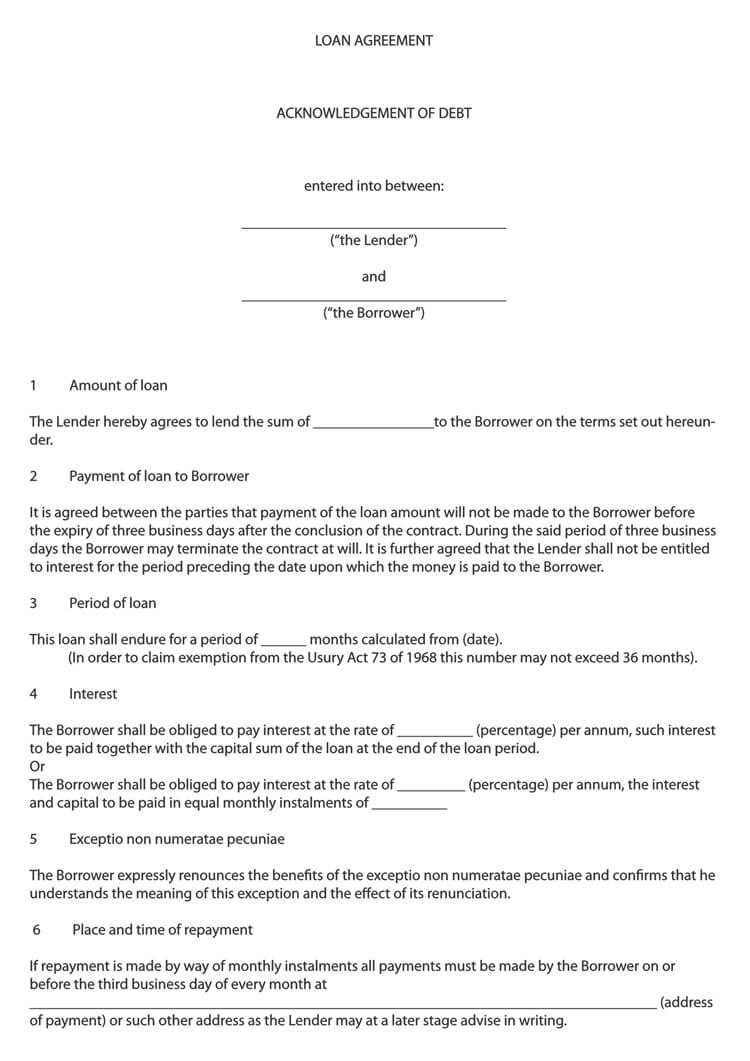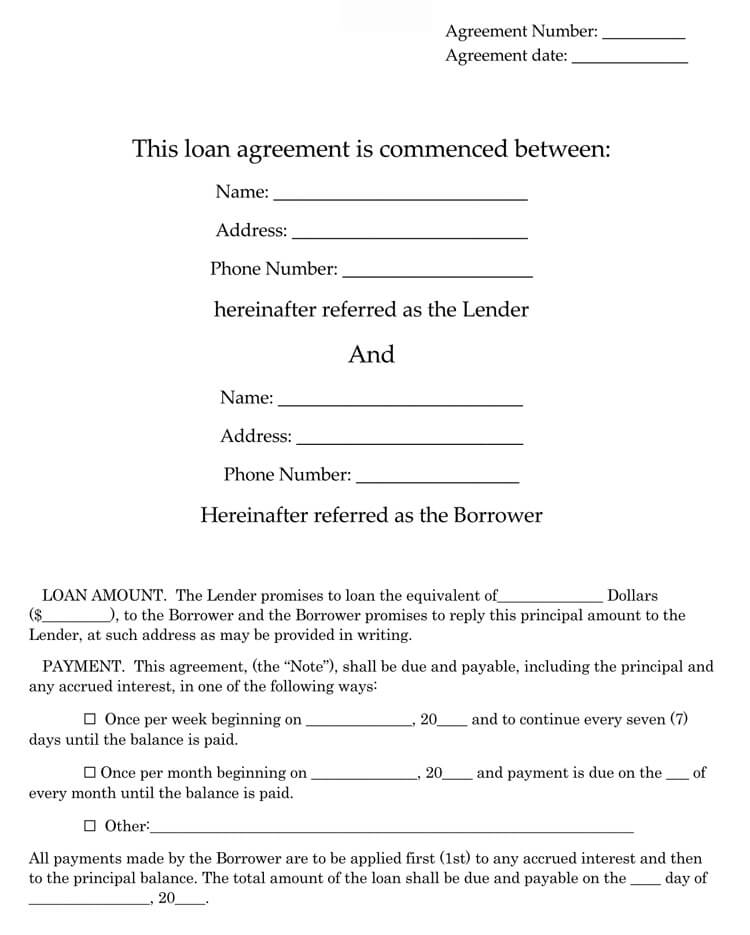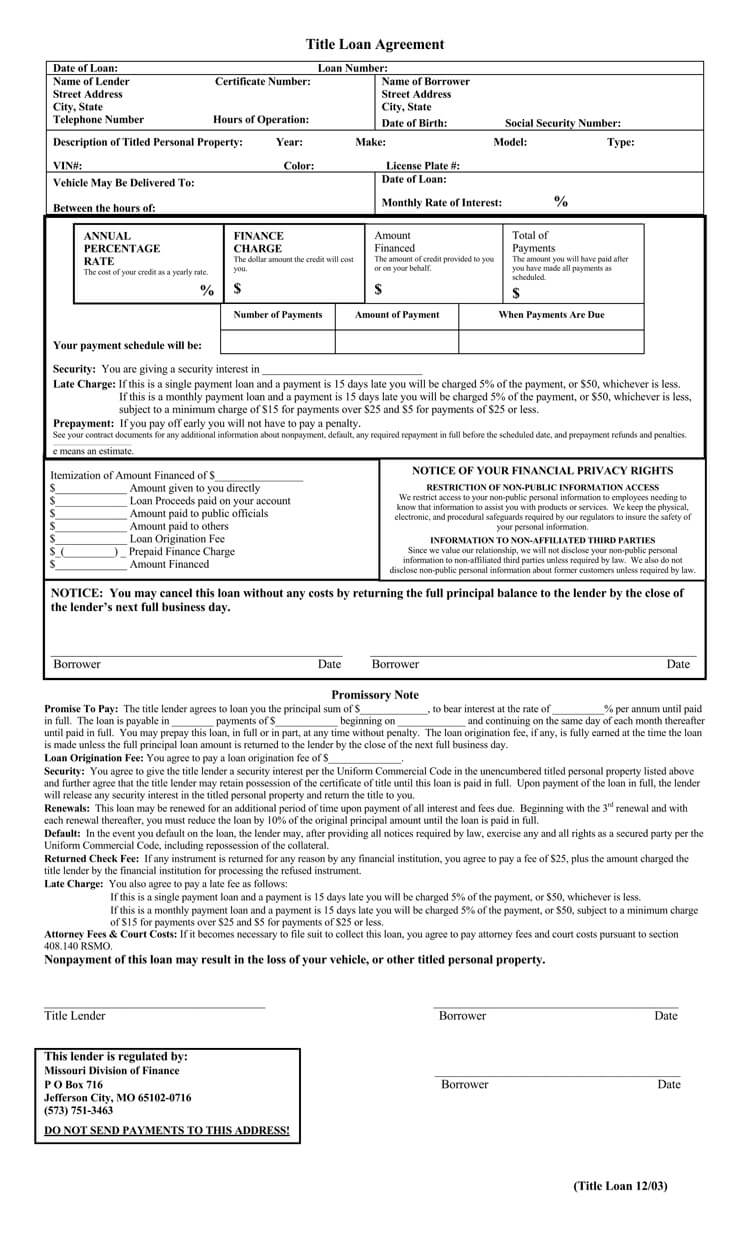The debt industry is prominent but cannot be based on promises and assurances. Unfortunately, promises and assurances do not hold up in court,
So there is a need for something more concrete, which is a personal loan agreement. A personal loan agreement is a term you will encounter whether you borrow or lend money.
This guide will explore personal loan agreements, what they entail, and everything in between.
Loan Agreement Templates
Here are a few templates to guide you when creating your loan agreement. The samples clearly show the details you should include in a personal loan agreement.
What is a Personal Loan Agreement?
A personal loan agreement is a document detailing the conditions and terms of a loan, signed by both the borrower and the lender. Unlike a verbal agreement, a personal loan agreement is legally binding and can be enforced in court. Any conditions outlined in the loan agreement are mandatory, with both parties abiding by them. The agreement usually contains information on both parties, the loan amount, interest rates, and the loan’s due date. A personal loan agreement also contains the proposed payment method and what happens in the case of a default in payment.
A personal loan is a sum of money borrowed by an individual that may be used for any purpose. The borrower will be responsible for paying the lender back, plus interest. Interest is the cost of a loan and is calculated on an annual basis.
The lender may be a bank, financial institution, or an individual; the loan agreement will be legally binding in either case.
Purpose of a personal loan agreement
The purpose of a personal loan agreement is to safeguard both parties from any changes to the original terms, like an increase in interest or a change in the due date. Whether or not interest is involved, it is always prudent to have a personal loan agreement when lending or borrowing money. Some examples include:
- Family members lending or borrowing money
- Friends lending or borrowing money from each other
- Institutional borrowing for any purpose
- Business transactions, such as securing capital for a startup
- Student loans for expenses or tuition
- Loans to finance large purchases
- Borrowing for real estate purchases and down payments
Alternative names for a personal loan agreement
Sometimes a personal loan agreement goes by other names, some of which include:
- Business Loan Agreement
- Loan contract
- Promise to pay
- Term loan
- Secured/Unsecured note
- Personal loan
Loan Agreement: When, Why, and Who Needs One?
A loan agreement is more needed in certain situations than others, despite being applicable whenever a loan is discussed. We examine when a loan agreement is required, why it is required, and who requires one.
When is a loan agreement needed?
Once a loan is discussed or exchanged, you need a loan agreement. Verbal agreements and promises are inconsistent, especially since memory is only sometimes reliable. Verbal agreements cannot be admissible in court, as the court demands evidence if such a need exists.
Oral agreements are often vague and confusing; a written one is stated clearly. The principal amount, due date, and interest rate are all clearly stated for the understanding of both parties. There is also a provision for the consequences of breaching the terms of the agreement, all of which can be legally enforced. Where there is a breach, a neutral third party can interpret the terms based on the agreement and enforce them.
Some possible scenarios where a loan agreement is necessary include the following:
- Seeking an advance on your paycheck
- Capital funds to finance a business
- Seeking a loan to pay tuition or pay off student loans
- A personal loan from a family member
A personal loan agreement is subject to tax, so you may need to account for this when drawing up the contract. Based on the terms of the contract, the loan can be classified as a gift or an investment, both of which are taxable. You can either be looking at an income tax or an Applicable Federal Rate (AFR).
Why do you need a loan agreement?
A loan agreement is designed to protect both parties from sudden term changes. The lender cannot suddenly increase the loan rate; neither can the borrower default on payments. Any changes can be legally negated, thanks to the loan agreement.
Additionally, a loan agreement provides proof of your transactions, giving you a concrete paper trail. Where tax or other financial situations arise, your loan agreement can serve as a receipt for your transaction.
Who needs a loan agreement?
Anyone lending or borrowing money needs a loan agreement. Whether the loan is between family members or between organizations, you will need a loan agreement. Investors, real estate financiers, and wealthy individuals, among others, all need a personal loan agreement when lending money.
Types of Personal Loan Agreements
Loan agreements come in different forms, including:
Fixed-rate loan
In a fixed-rate loan, the interest rate applied to the loan is consistent throughout its duration. The rate is established at the contract’s start, written in the loan agreement, and is applicable accordingly. For example, if you seek a ten-year loan at 10% from an investor, this rate will remain consistent for ten years.
Co-sign loan
You do not have to be the one seeking a loan to be held accountable. You can also co-sign a loan for someone else and still be culpable if there is a breach. For example, you can co-sign a mortgage loan for someone else, and you may be required to pay it if they miss a payment.
Secured loan
A secured loan requires certain assurances in the form of collateral before it is issued. Collateral can be landed properties, vehicles, or company shares, which are usually worth more than the loan amount. Where there is a breach, the lender can claim the collateral and sell it off to repay the loan. Examples of secured loans include bad credit loans, mortgages, life insurance loans, secured credit cards, vehicle loans, and car title loans.
Unsecured loan
Unlike a secured loan, there is no collateral in an unsecured loan. The only thing that makes this loan enforceable is the contract. This loan is relatively easy to get, limited in amount, and does not involve much paperwork. An unsecured loan usually relies on a credit score to determine if a borrower is eligible for one. Student loans and credit cards are perfect examples of unsecured loans.
Viable-rate loan
Here, the loan rate can change over the agreed-upon period, despite periods of consistency.
Terms Associated with Personal Loan Agreement
Certain terminologies are used in relation to the topic of signing a personal loan agreement for context. These terms are legally binding, and anyone dealing with loan agreements must be aware of them.
Promissory note
A promissory note operates in good faith and is a written promise by the borrower to repay the loan. A promissory note serves as an IOU and can include the loan’s repayment terms.
IOU (I Owe You)
An IOU confirms a borrower’s promise to pay back a loan by a specific deadline. In addition, an IOU creates a legal paper trail for the loan that serves as proof of the agreement.
Line of credit
A line of credit is a loan with no specific repayment date. Although there are no deadlines in this situation, the borrower has ongoing access to certain amounts. A credit card is a perfect example of a line of credit.
Standard loan
A standard loan is paid in full at the end of a fixed period rather than in installments. Furthermore, there is no restriction on what the borrower can do with the money as long as it is returned when agreed upon.
Contents of a Loan Agreement
A loan agreement must contain specific, important details before it is considered viable. To write a personal loan agreement, follow these guidelines, and include the following information:
Name of the parties
The names of all parties involved include the lender, borrower, and guarantor. The only names recognized here are legal, not terms of endearment and affection. However, if any of the parties involved decide to be addressed by a different name aside from the birth name, a legal agreement must be signed. The need for this is to prove ownership and prevent confusion among parties.
Specify the loan amount and repayment date
The amount borrowed, the loan duration, and the repayment date should be specified in the personal loan agreement.
Repayment detail
How is the loan to be repaid? The repayment terms will include the payment method, plans, and amounts. It can be a single bulk payment or several installment payments. These terms will be determined beforehand and included in the loan agreement.
Loan’s security (collateral and insurance)
The details of any security attached to the loan should be stated here. For example, for landed properties, the address and specifications of the property.
Interest rate and late fees
The loan agreement should also state the agreed-upon rate and penalties for missed payments. Late fees usually serve to facilitate prompt payment.
Option for prepayment
You can create conditions for early repayment or installment payments to refinance the loan by taking advantage of lower interest rates. However, many loan agreements have a prepayment penalty clause in them to compensate for this risk for the lender.
Provisions for default
Should the borrower fail to pay the loan as agreed, there can be punishments. Any special punishments in this scenario are stated here. For example, the borrower may forfeit the collateral, or the interest rate may increase.
Additional relevant terms
Any other terms that are a part of the loan can be included here.
- Means of communication: Reminders and any modifications to the loan agreement will be announced through authorized channels. And thus, the preferred means of communication should be clearly stated in the agreement. This eliminates the possibility of claims of ignorance or miscommunication.
- Mention resident state: Different states have different laws, which may affect the terms and conditions of the agreement. Therefore, specify the state whose laws will be applicable.
- Dispute resolution mechanism: The dispute resolution clause should be clearly stated and unambiguous. You can state how any disagreements will be resolved. The document should state whether you intend to resolve the dispute through arbitration or litigation. In a court case, the losing party will be liable for the winning party’s legal fees.
- Specify a guarantor or a co-signer: Where there is a guarantor or co-signer, include their names and roles. Only legal names and titles are to be used in this instance.
- Signatures of lender and borrower: The parties’ signatures on the document attest to their understanding of its provisions. The signatures are necessary for the agreement to be considered legally binding, as a contract is not valid without the signatures of all the relevant parties.
Loan Agreement Forms
Repayment Options
There are different possible ways to repay a loan, each of which will need to be agreed upon initially. Here are some possible loan repayment options:
Installment payments
The loan is gradually repaid with several small payments spread over a long period. The total interest amount is calculated and divided into small amounts, usually monthly or yearly, and then added to the principal sum. For example, if you borrow $100,000 at 40% interest for 14 months, you will pay $10,000 each month.
Installments with a final balloon payment
Another possible loan repayment option will have you pay installments towards the final amount and end the payment with one large sum. The interest payments can be made in installments while also allowing you to repay the principal on the agreed-upon date. For example, if you take out a $50,000 loan at a 20% interest rate for a year, you could pay $1000 monthly for ten months and then $50,000 in the final two months.
Lump sum
The capital plus interest will be returned in one bulk payment at an agreed-upon date. Example: If you borrow $1 million at 30% for three years, you will repay $1.3 million at the end of those three years.
Payable on demand
A payable-on-demand loan does not have a specific date for repayment. This can cause problems, especially if the borrower defaults after the payment is recalled. Also, it is difficult to recover such loans in the event of the death of the borrower.
Example: A sum of $10,000 was lent to a child to help him buy a house.
Loan Agreement Examples
Consequences of Not Having a Loan Agreement
One of the many repercussions of not having a personal loan agreement is that the terms of the loan cannot be enforced legally. Some other implications include:
- Unfair rate increments
- Unnecessary taxes
- Unpaid loans
Loan Agreement Samples
Frequently Asked Questions
Is there any interest in the personal loan?
Charging or not charging the interest on the personal loan depends on the choice of the lender. Many people would not charge interest on personal loans.
How is the interest charge?
The amortization schedule gives information on how the interest is charged on the loan. The lender could charge simple interest on the loan or he or she would charge the compound interest. Under compound interest, the interest is charged on the principal plus the interest amount, which is due on the borrower, which hits the borrower quite heavily and makes a person in huge debt.
Does a personal loan agreement need to be notarized?
No, you do not need to notarize a personal loan agreement. Notarizing a loan agreement is a choice that comes with the added benefit of legitimizing the document. If the document is ever challenged, it can be proven valid by a notary.
Is a personal loan agreement legally binding?
Yes, as long as both parties have signed the agreement, it is legally binding. The document will hold up in court and can be enforced by a law officer.
Can you cancel a loan agreement?
It is possible to cancel a loan agreement only under certain circumstances. The document can explicitly state the terms of termination and what happens afterward.
Should I charge interest in the loan agreement?
Although charging interest is a personal decision, it is common practice. You do not need to charge interest if you do not wish for any further payments beyond the principal amount.
Do you need a witness for a loan agreement?
There should be a witness to a loan agreement, but it is not mandatory. Even though a loan agreement’s legitimacy has already been established by the notary, a witness can still attest to its accuracy. A witness can confirm or dispel such claims if one party claims they were coerced into signing or were not in the right state of mind.
Note: Please read our Disclaimer before using any template.
